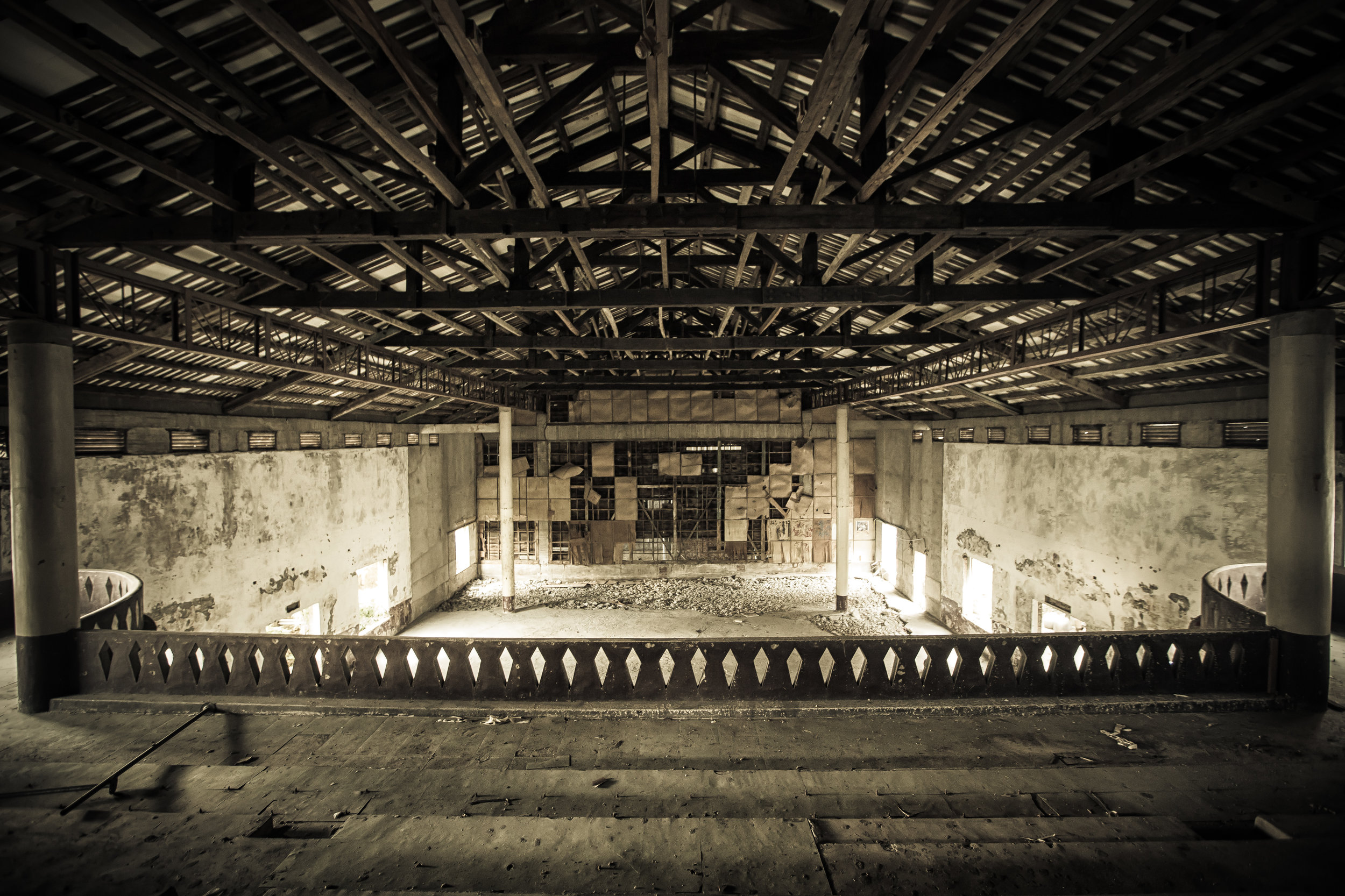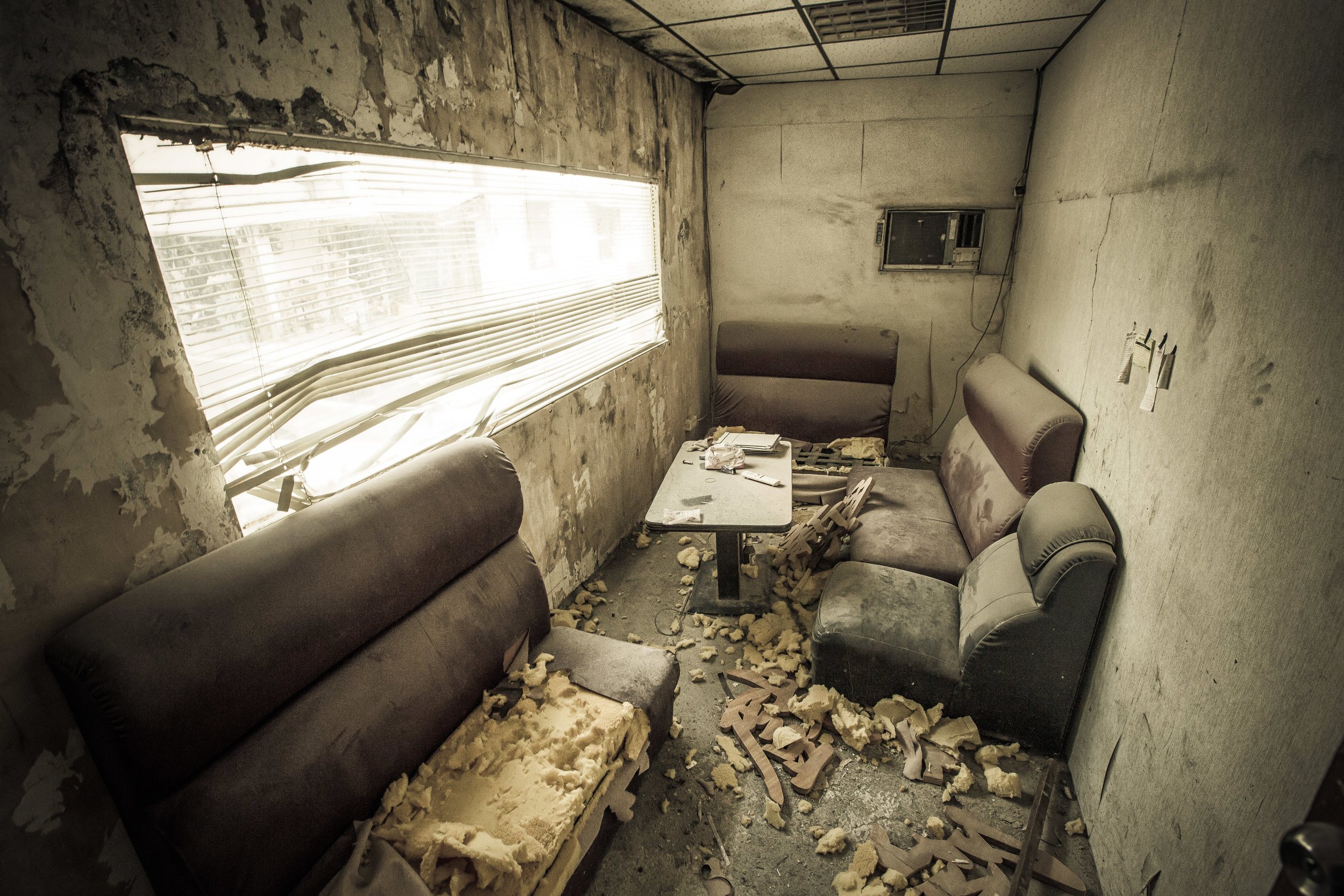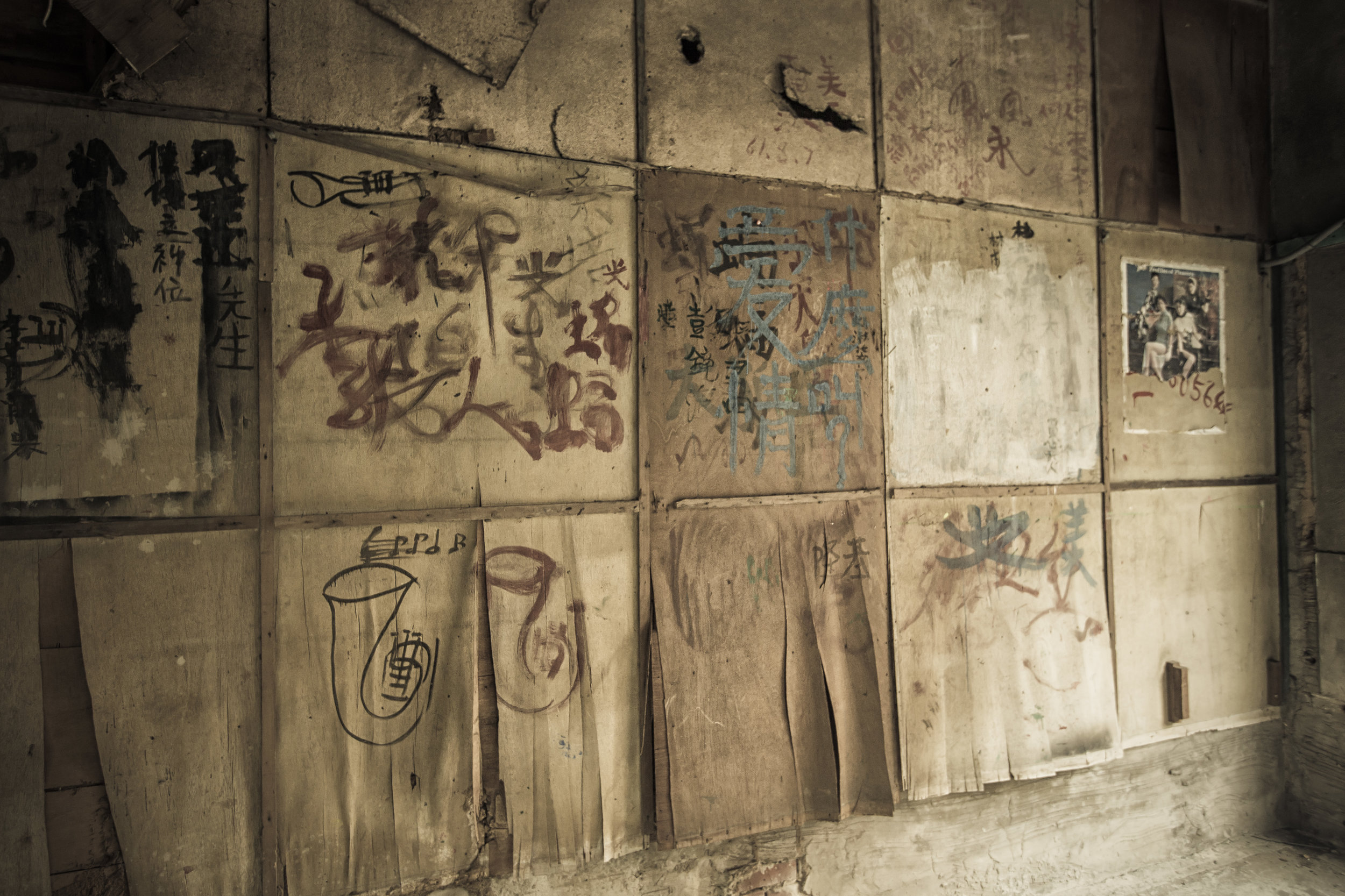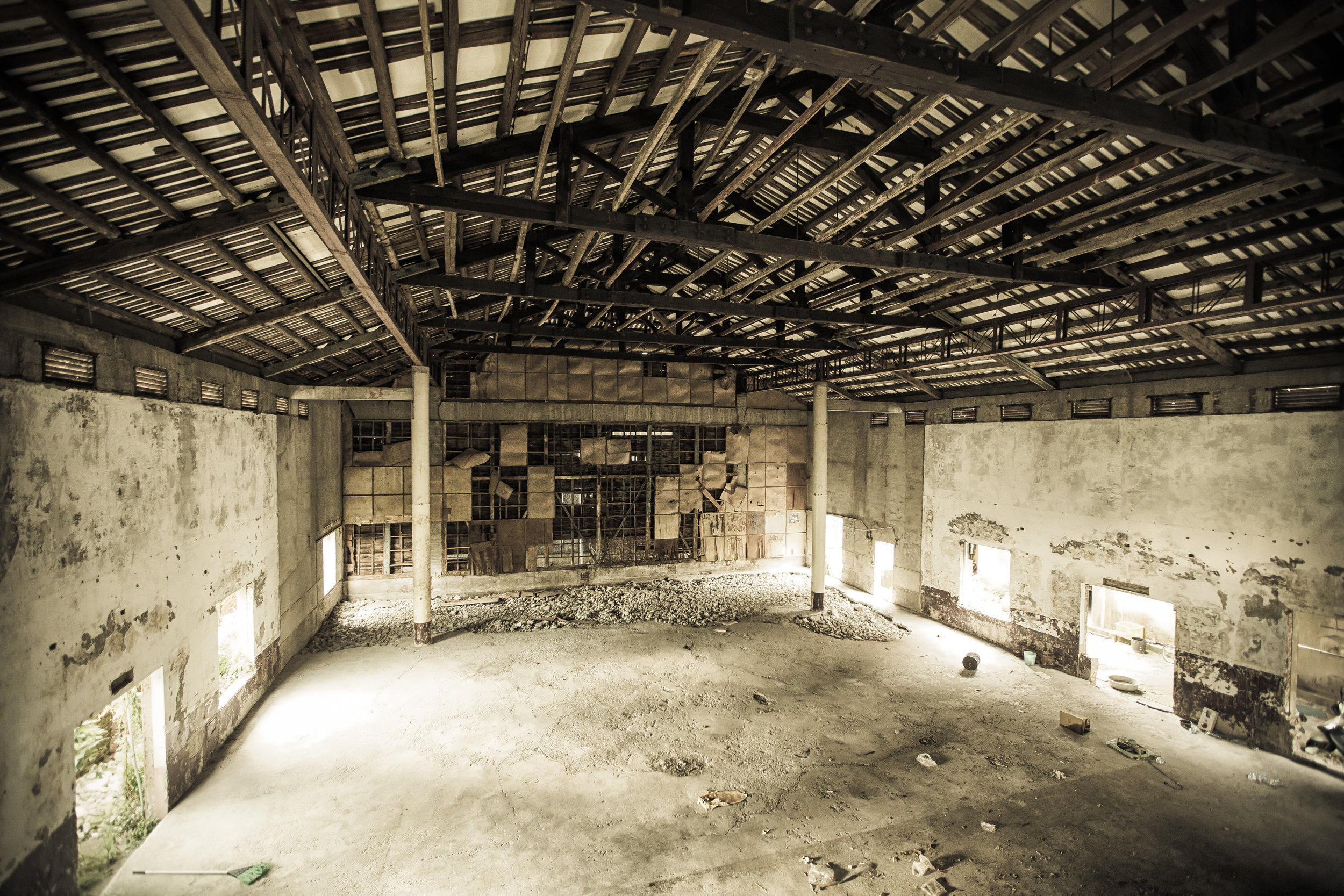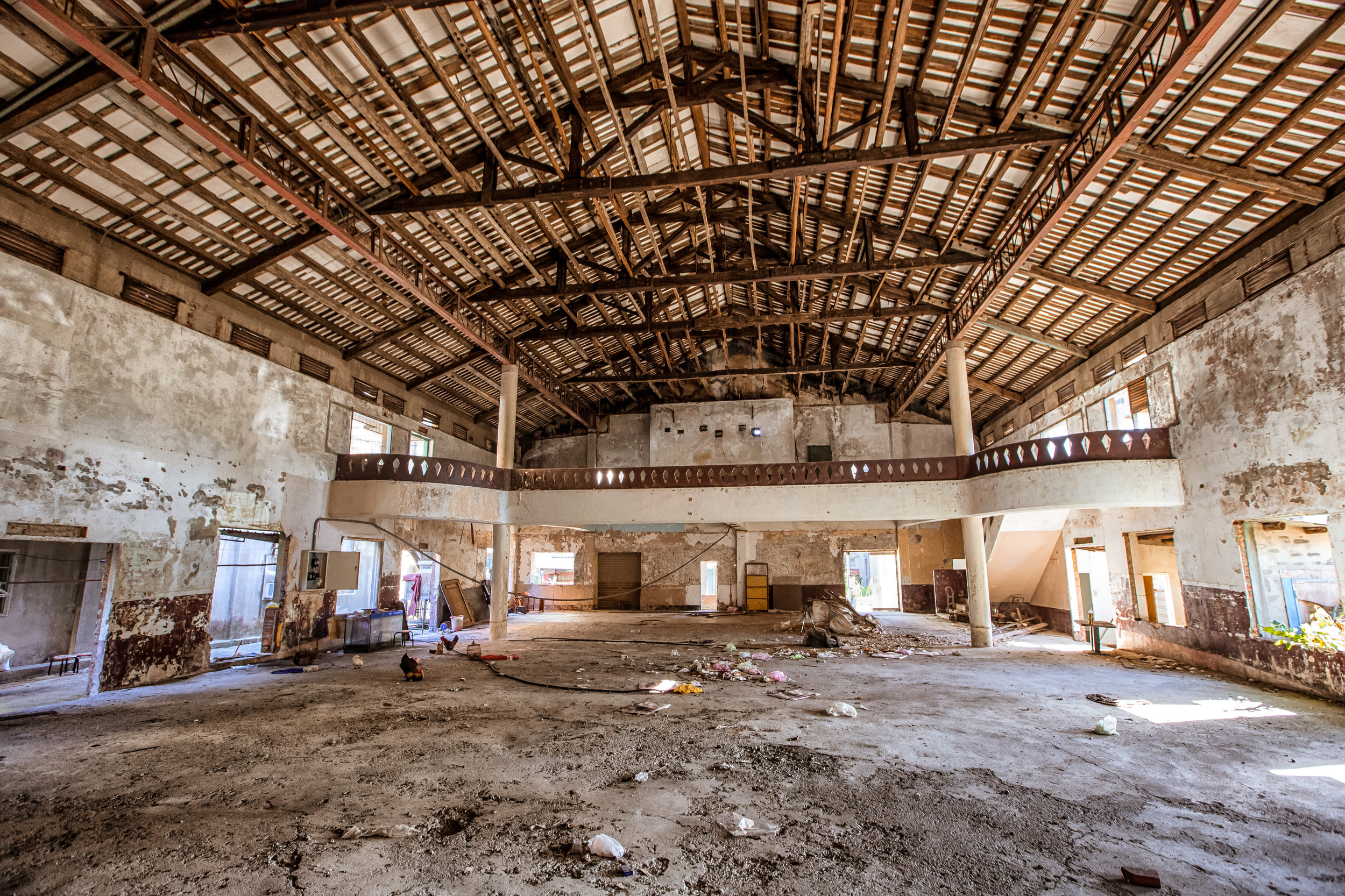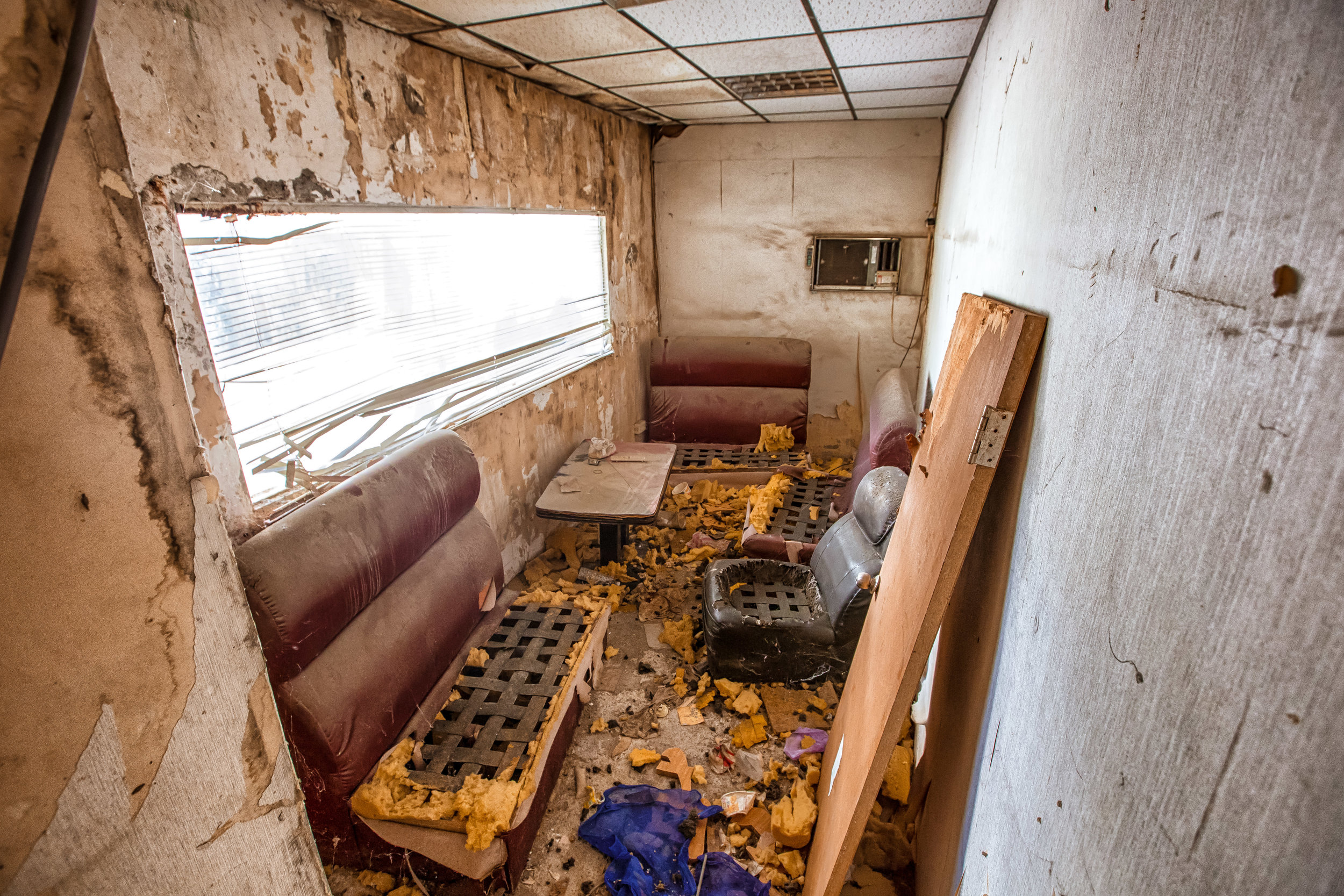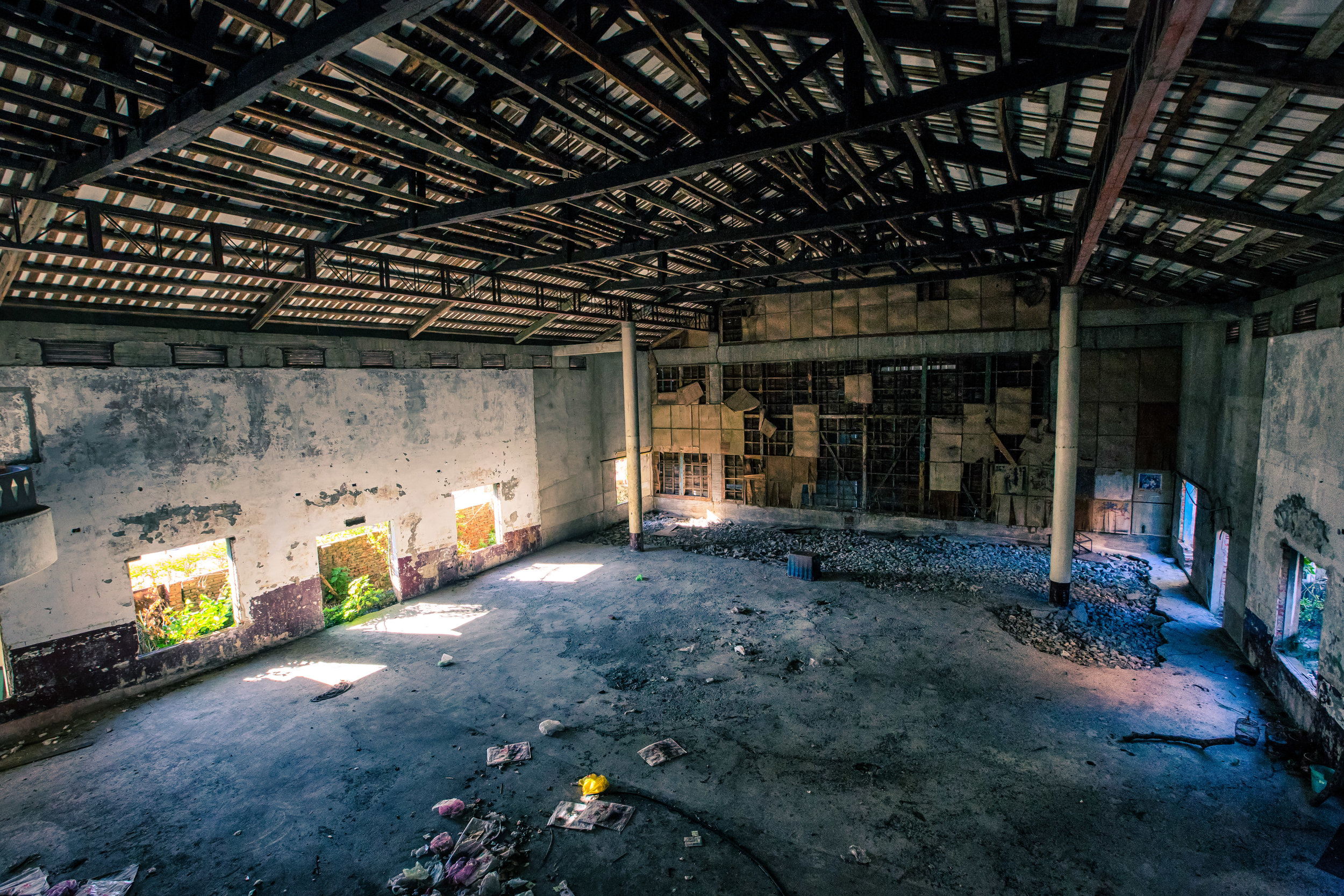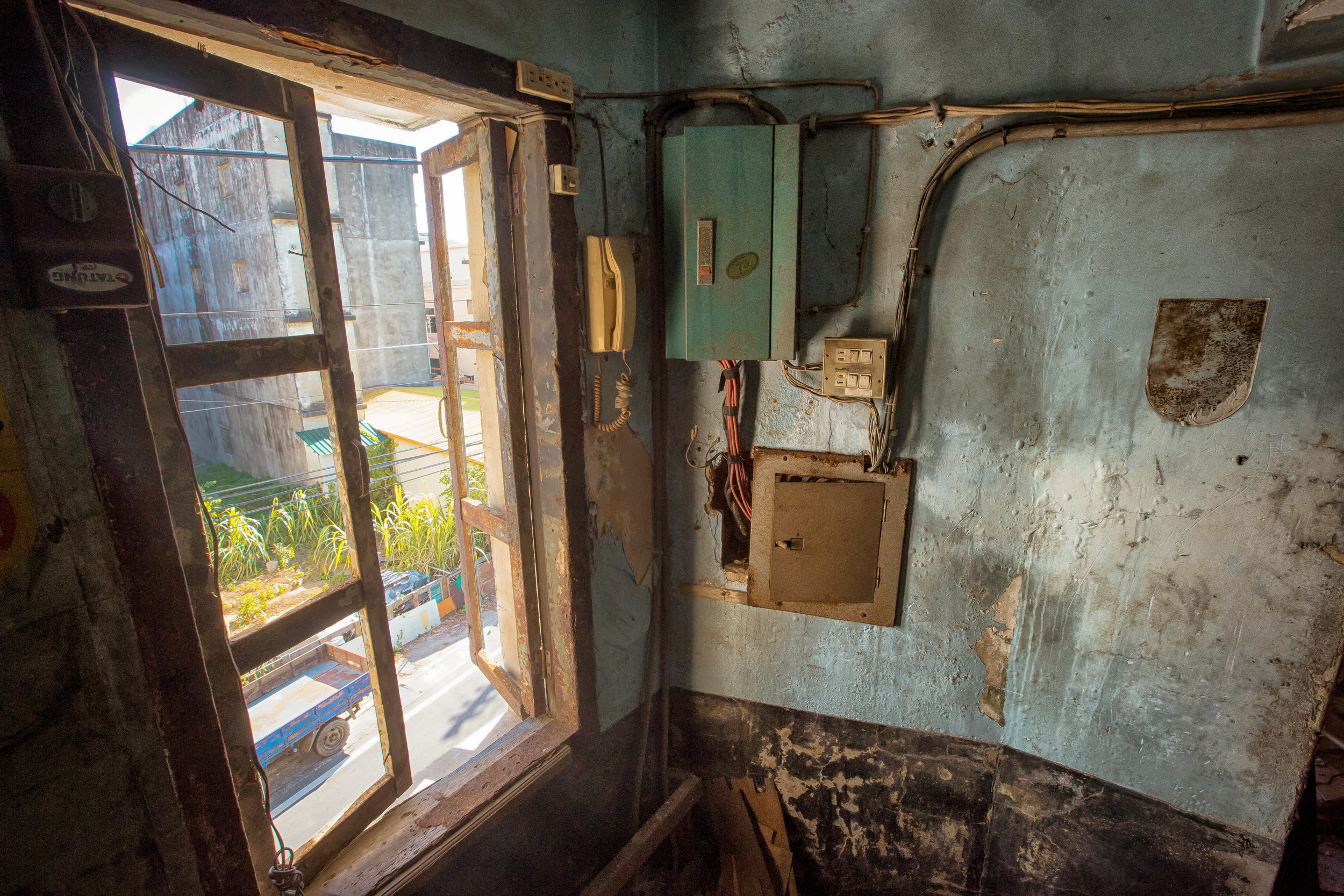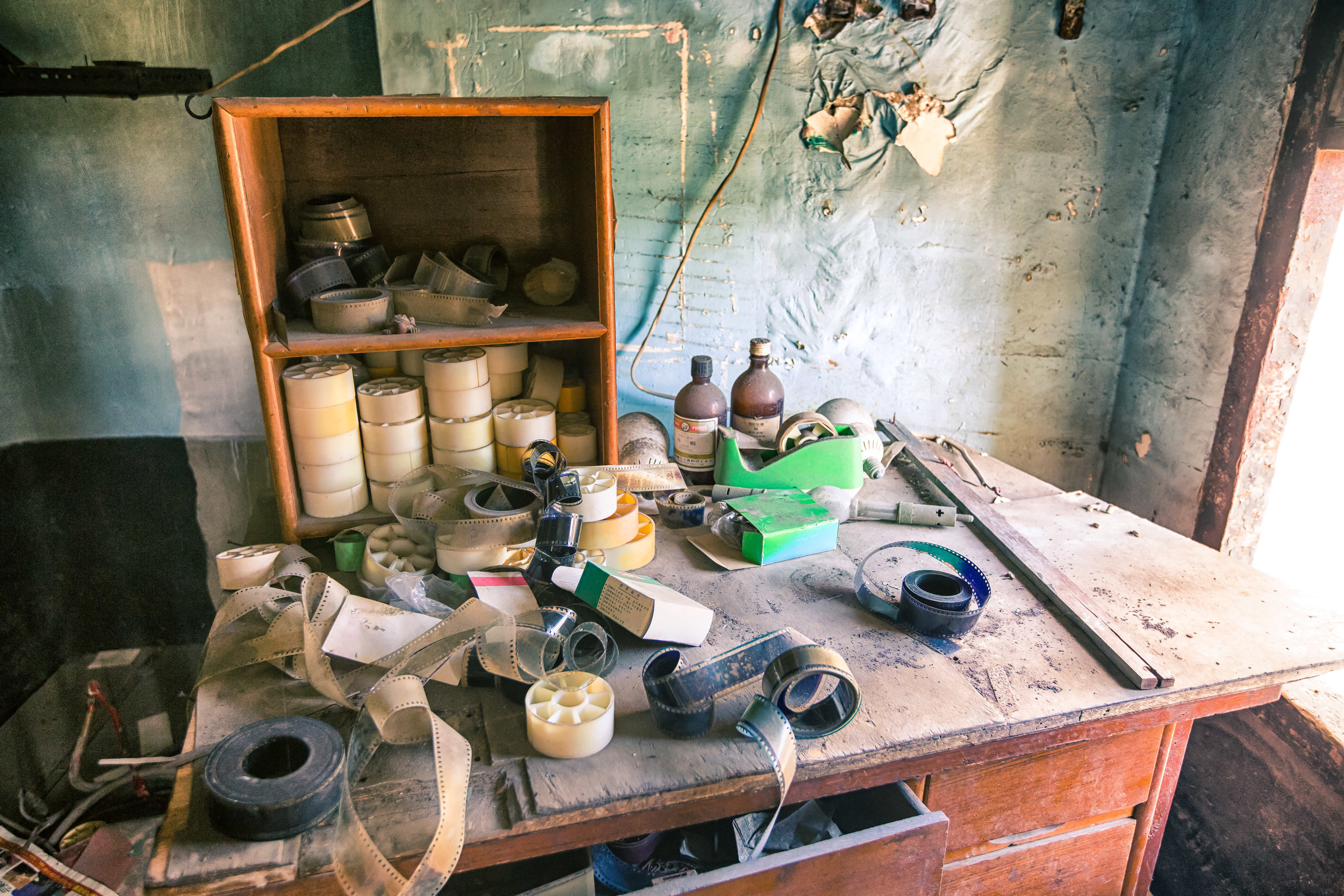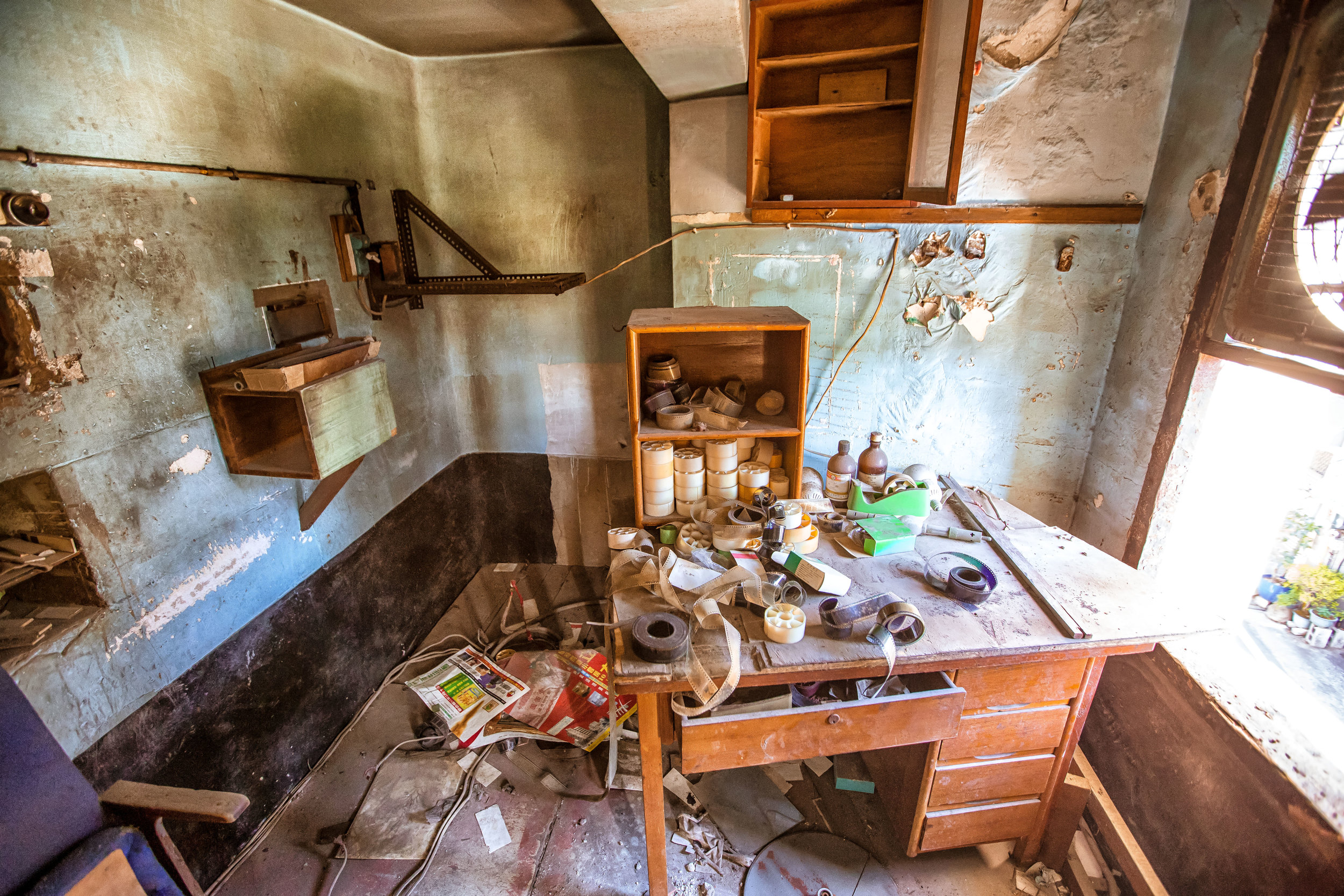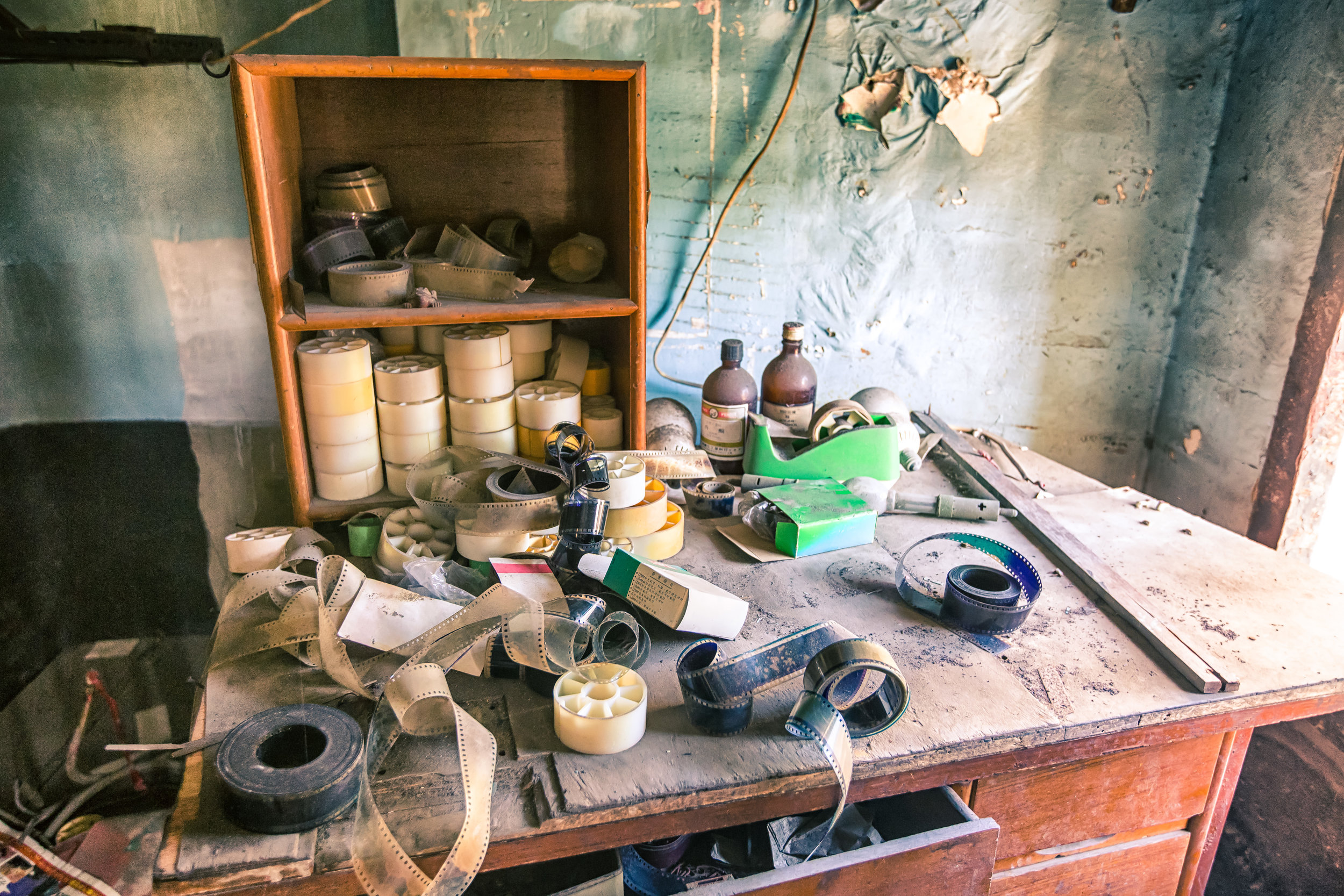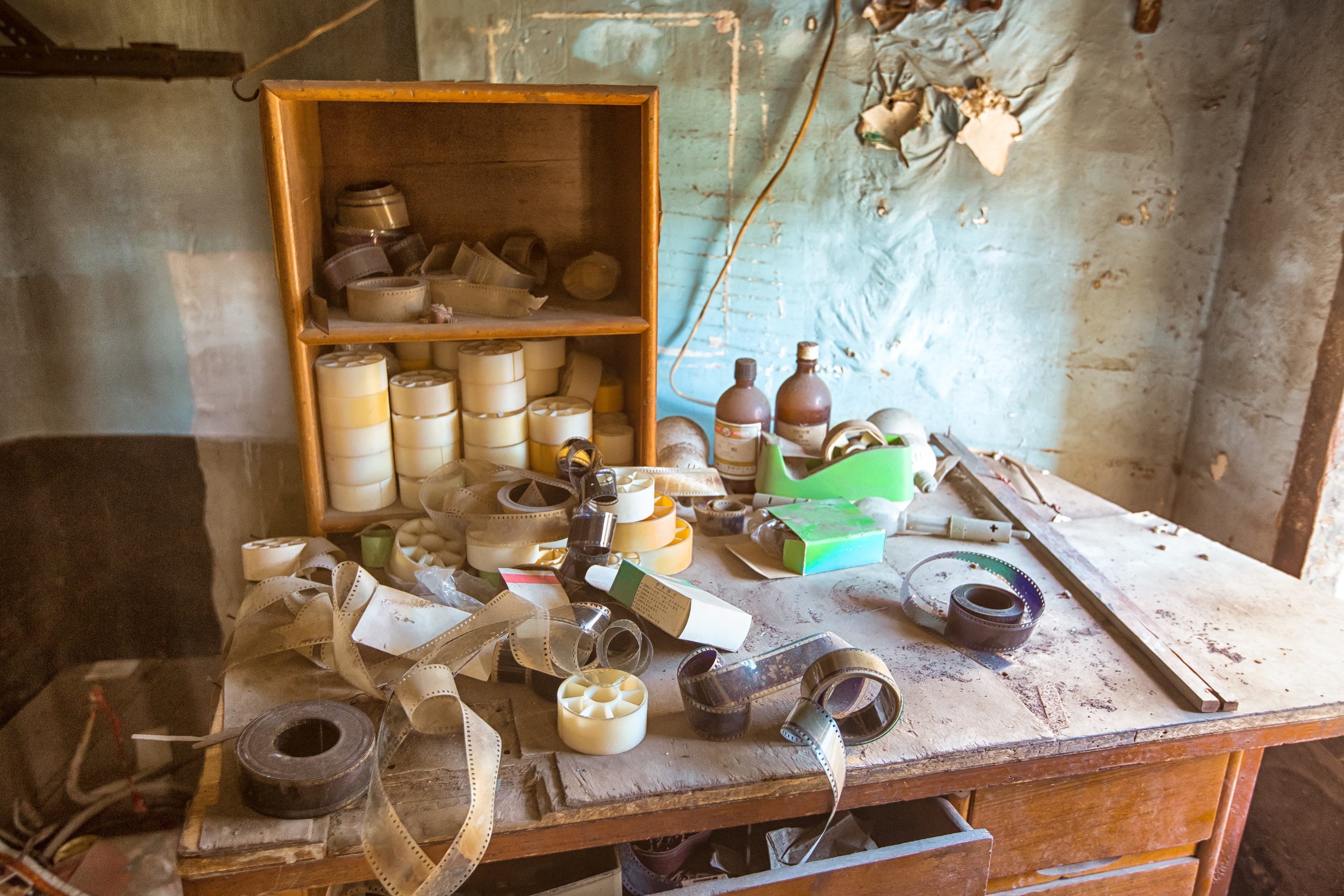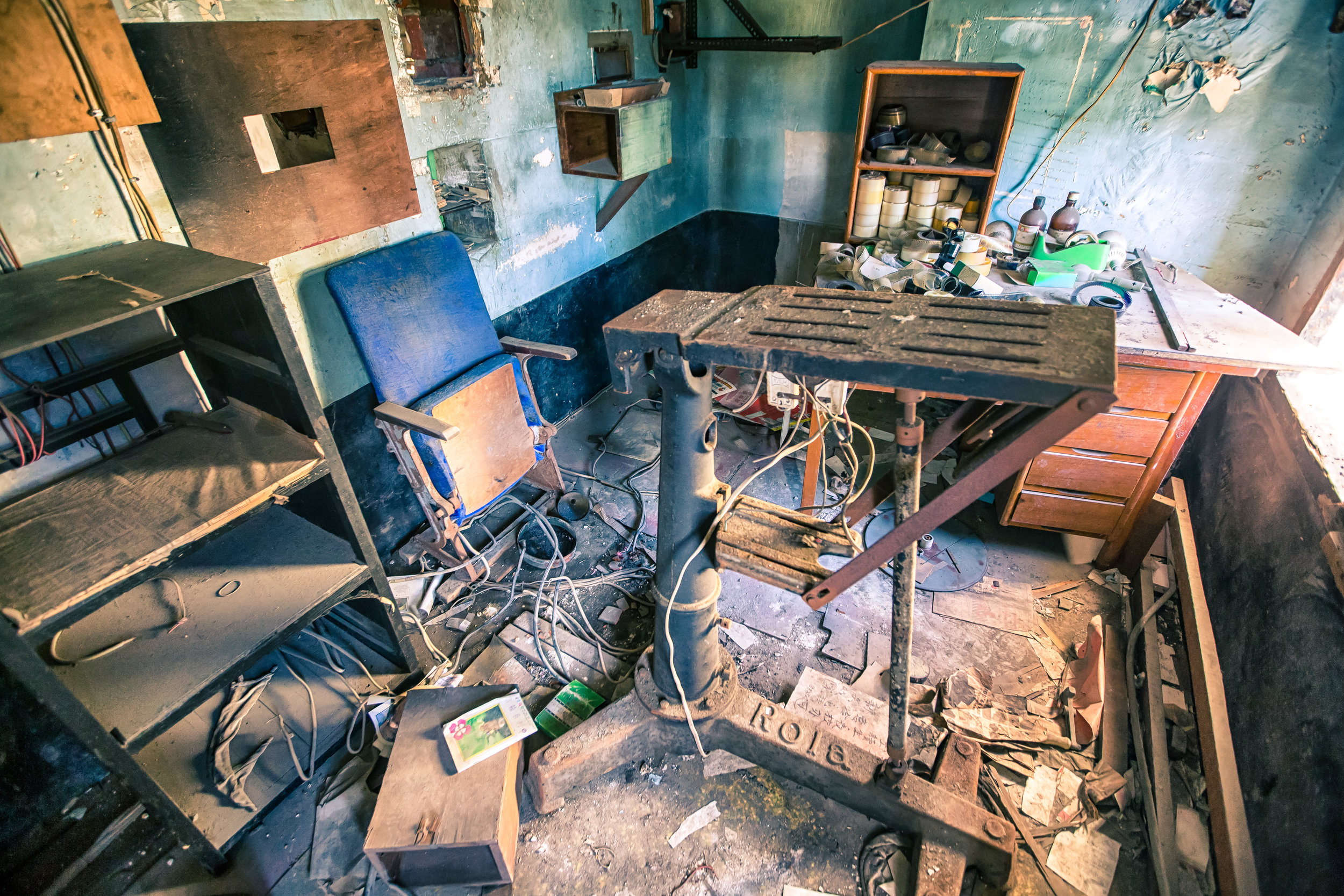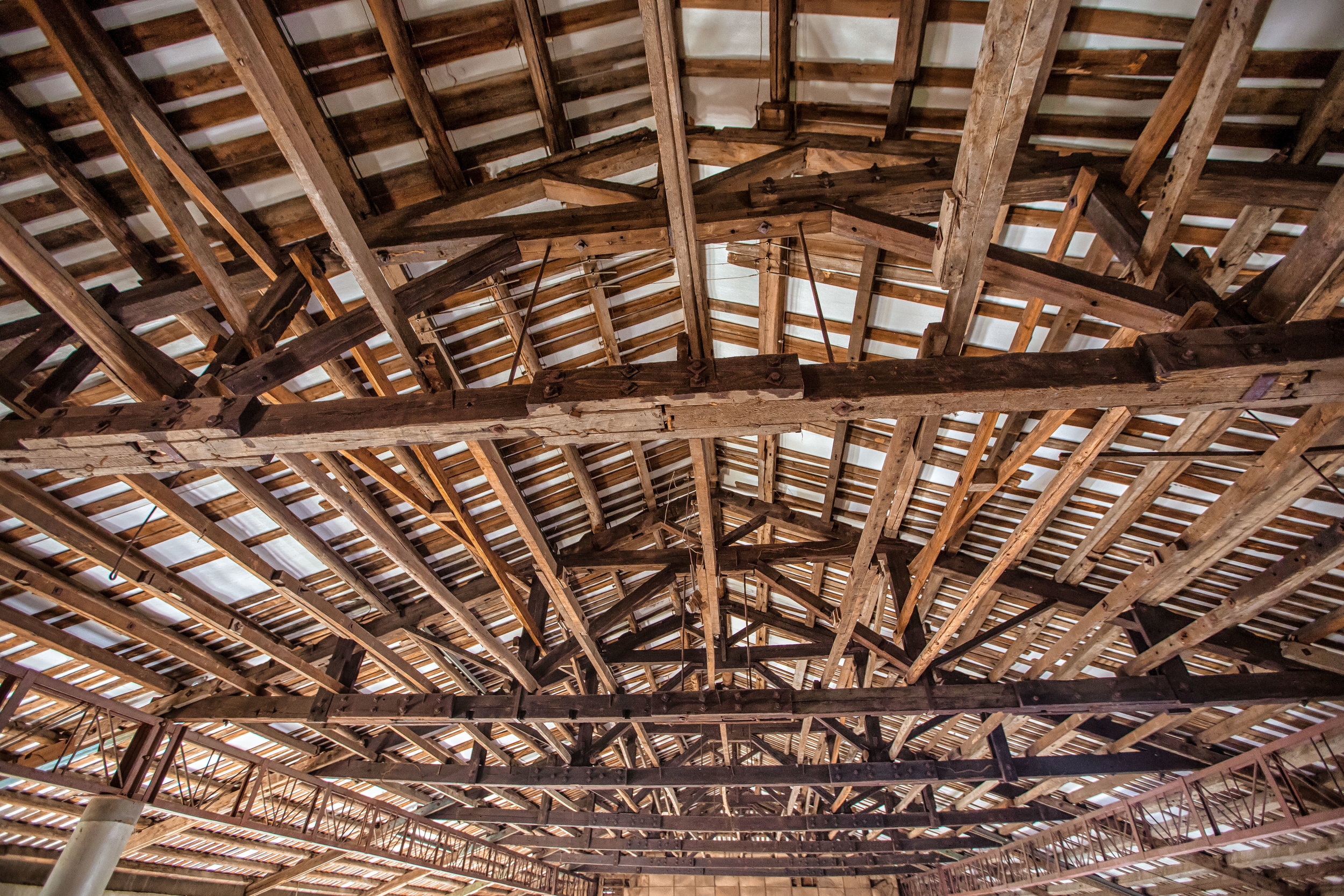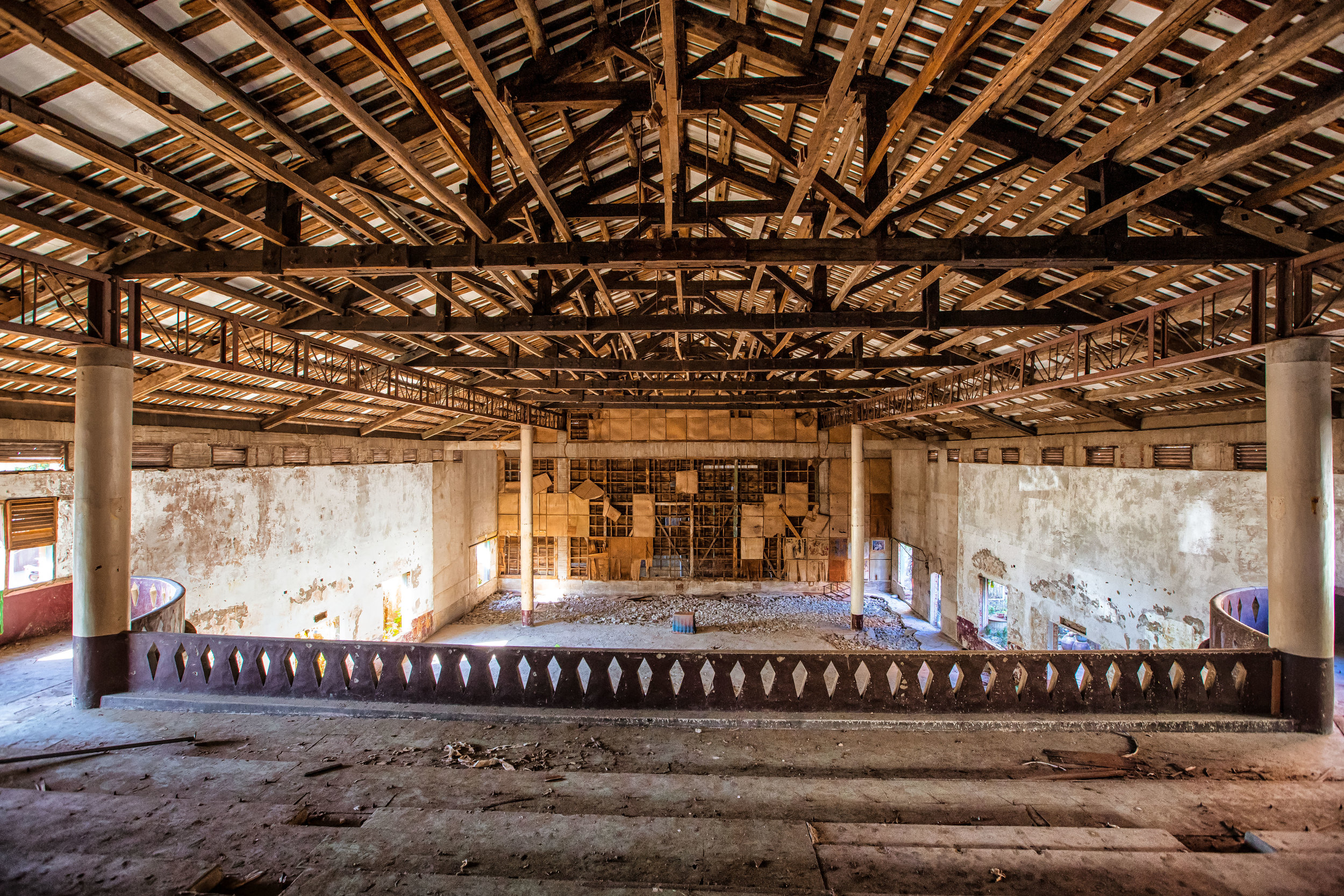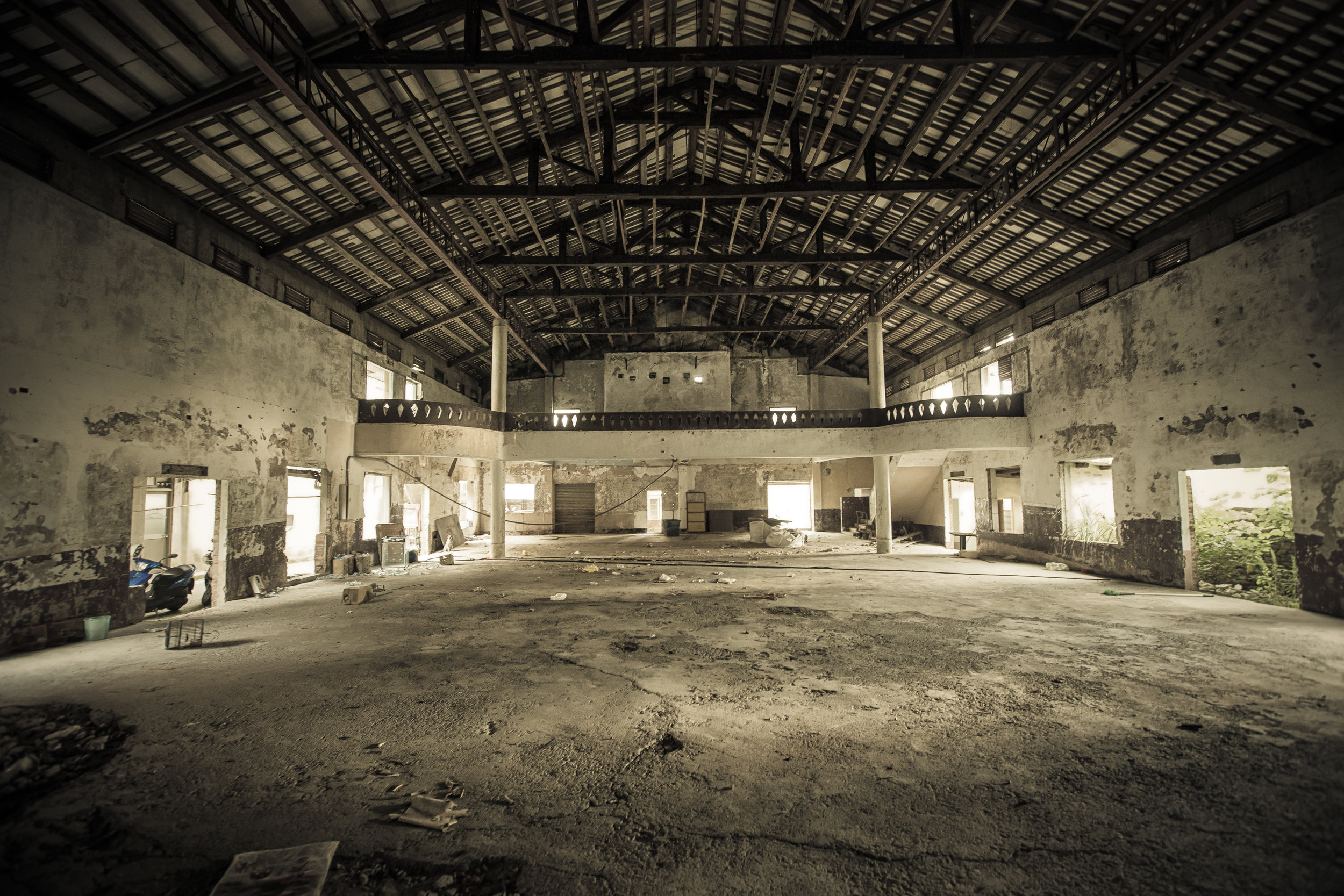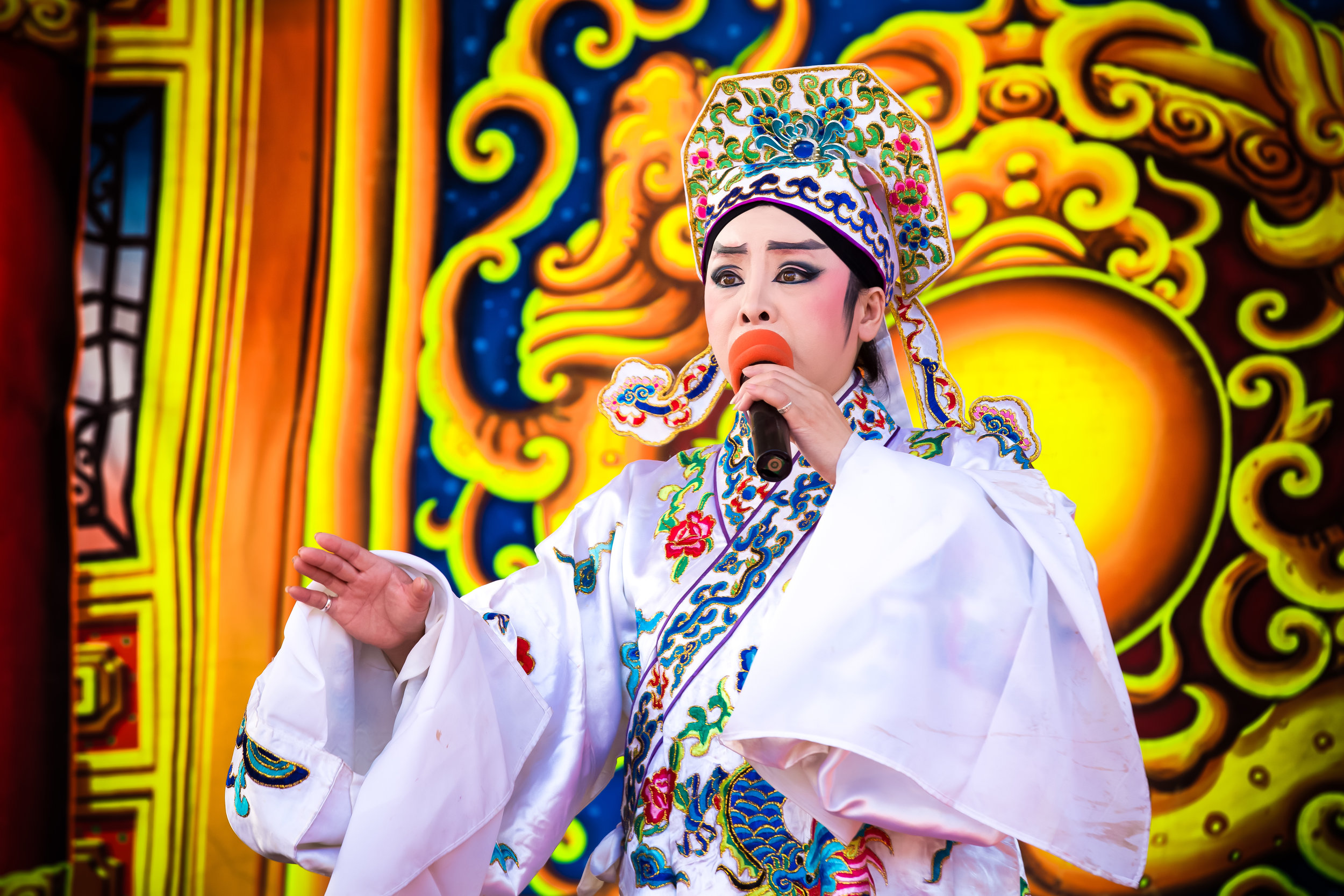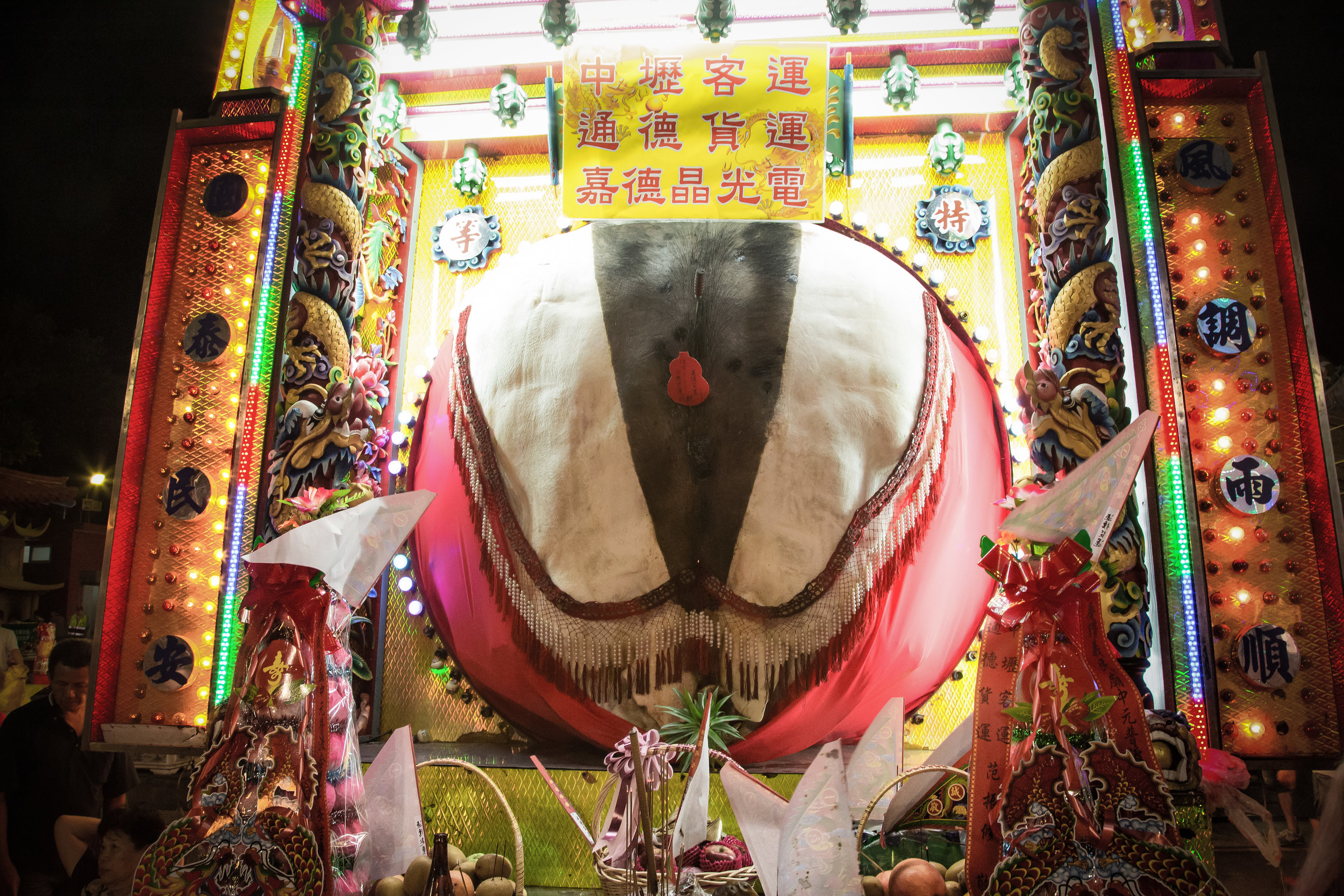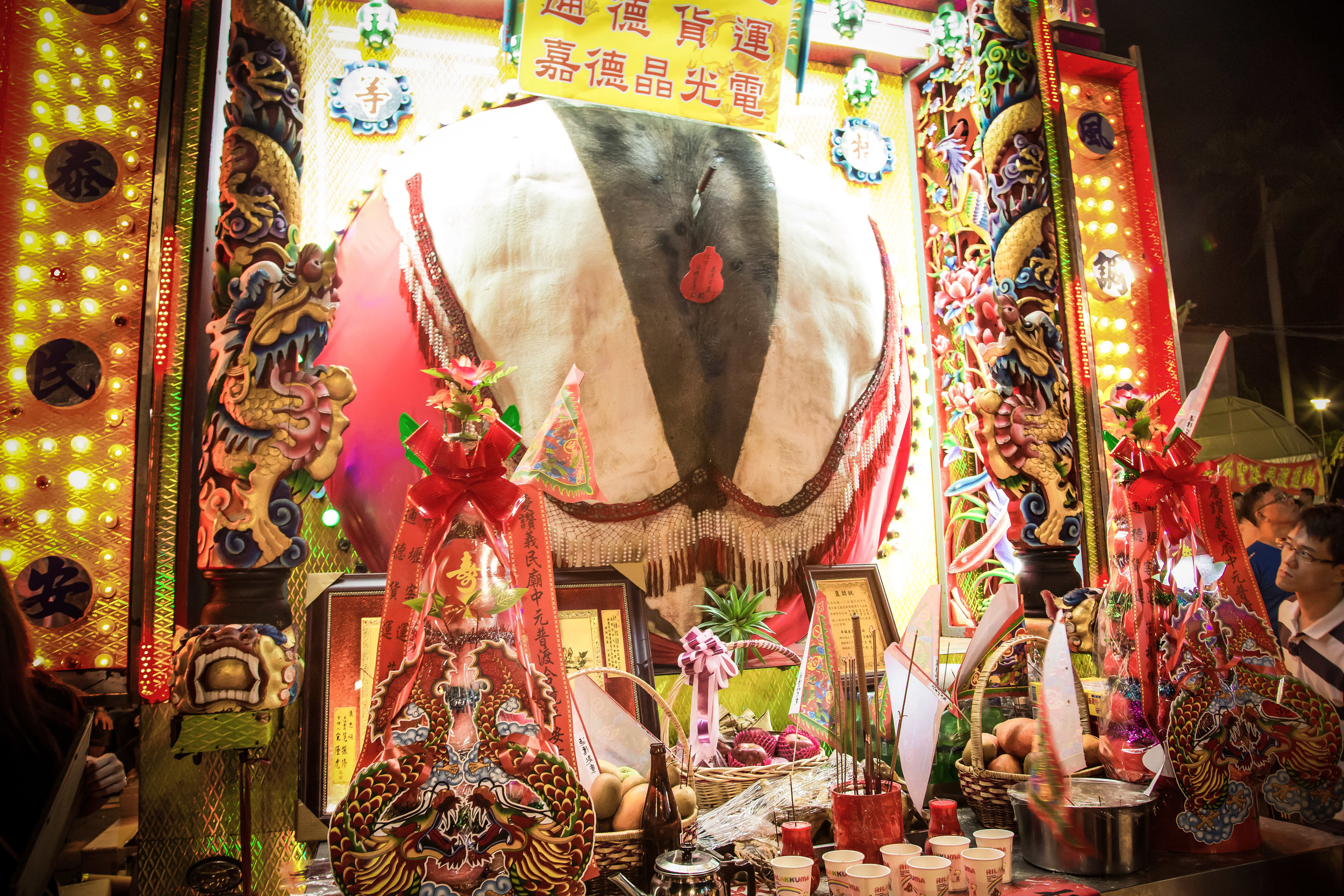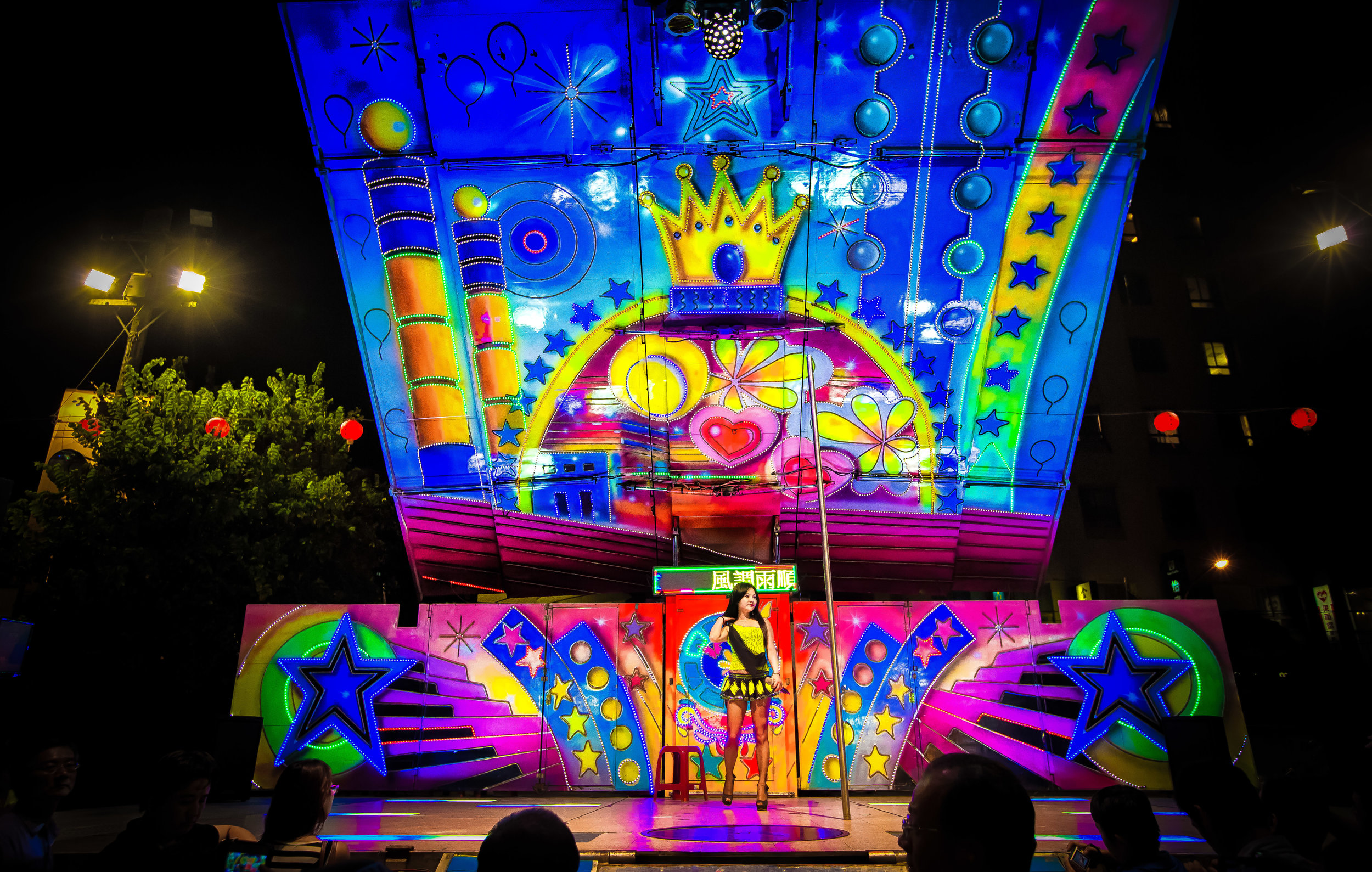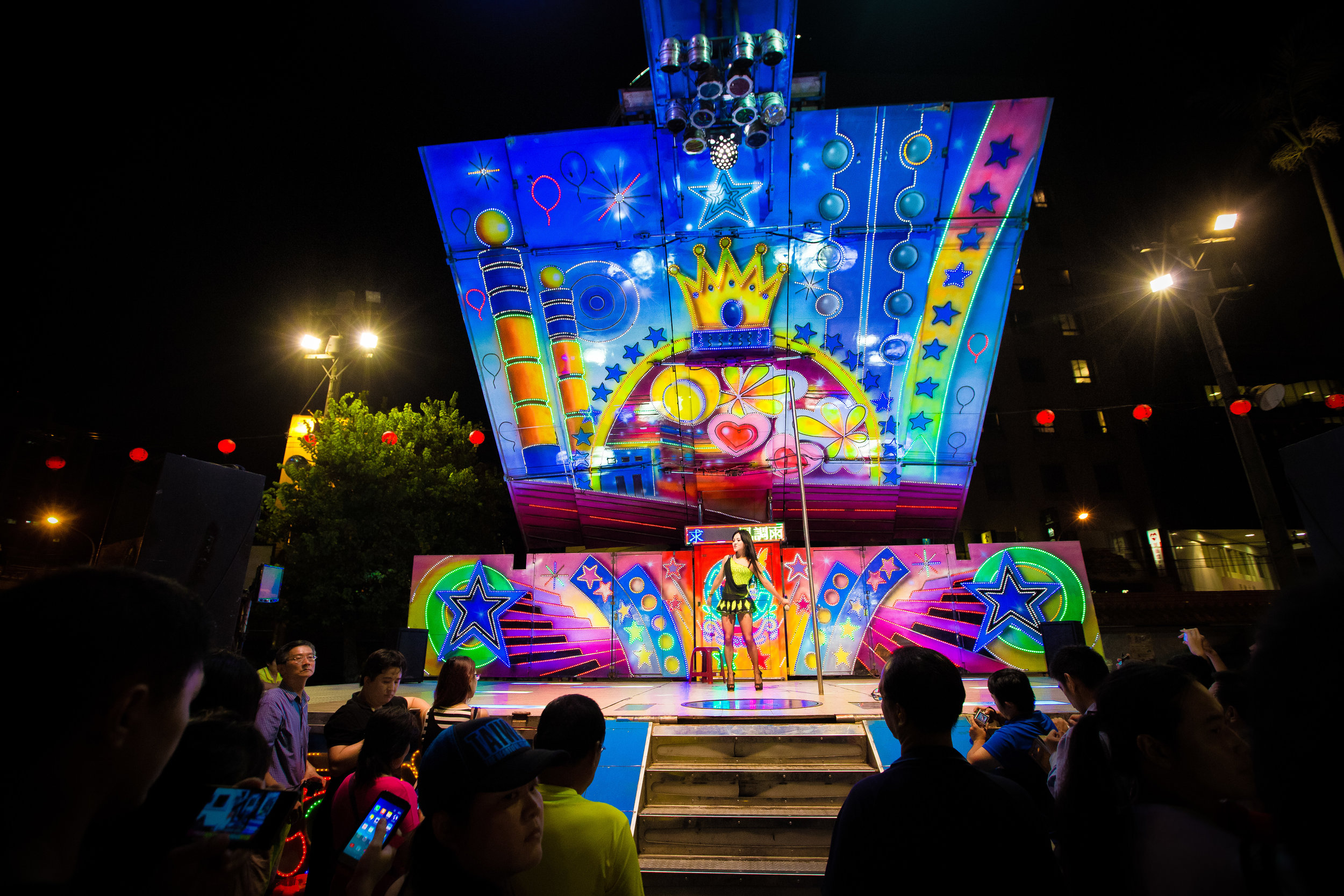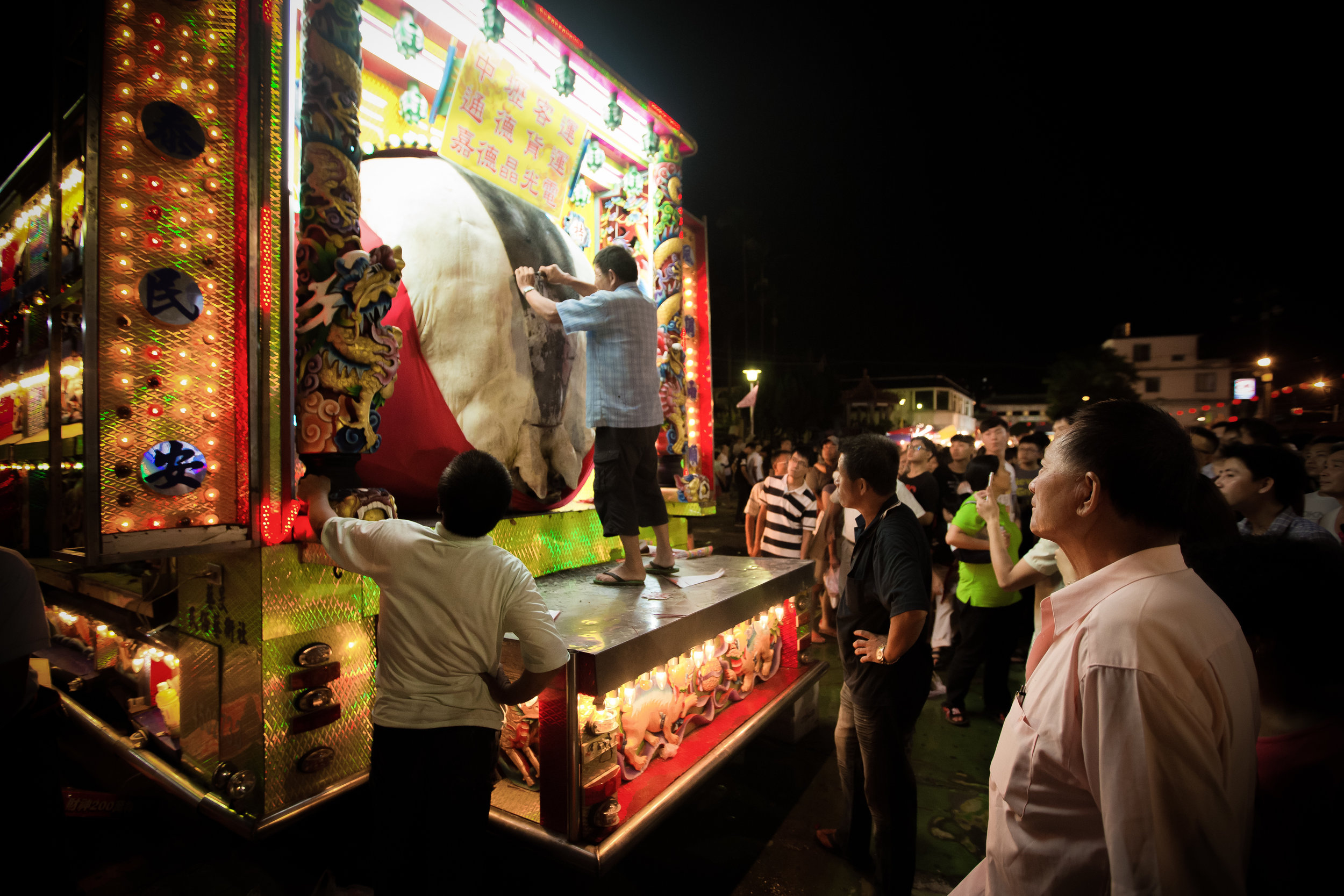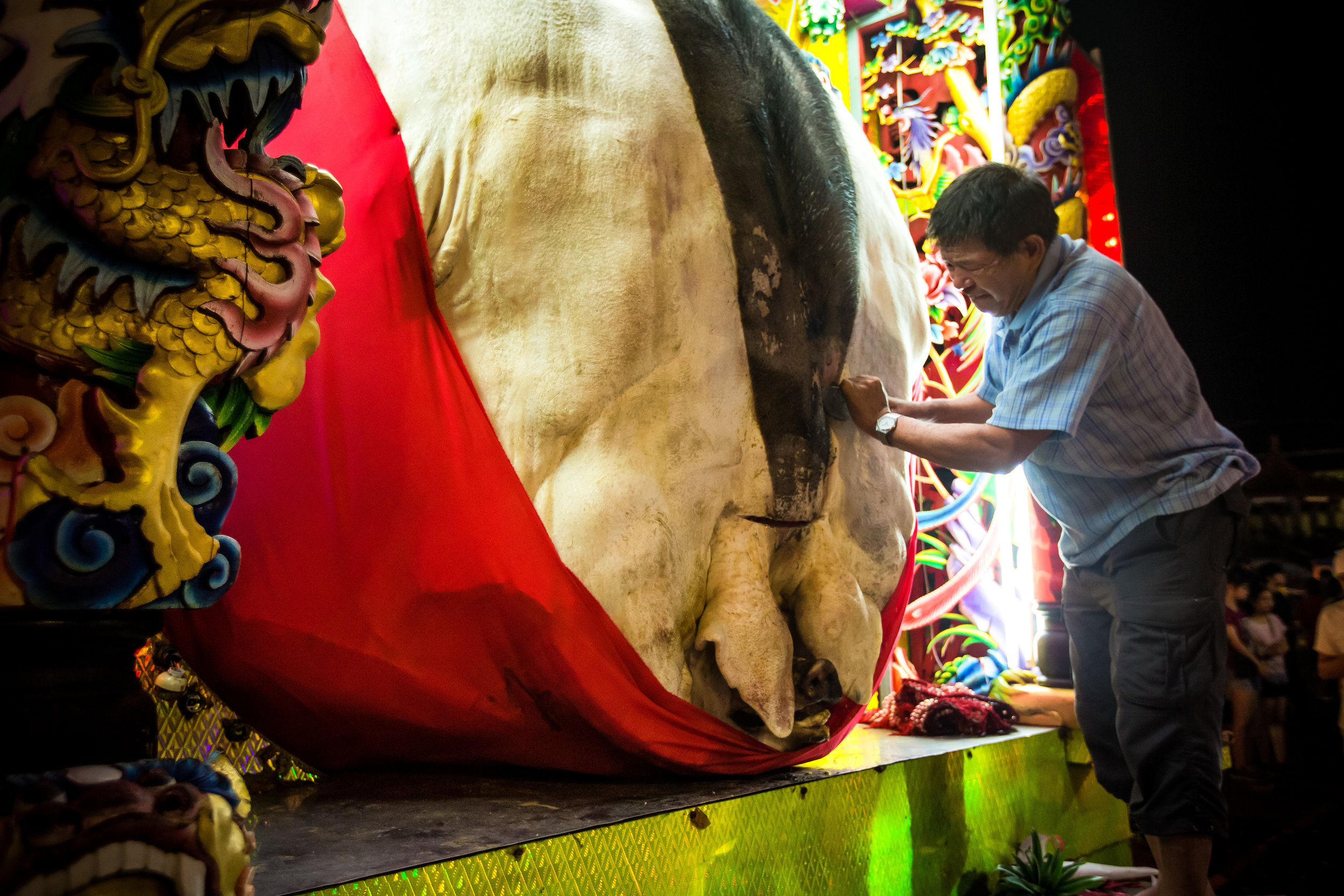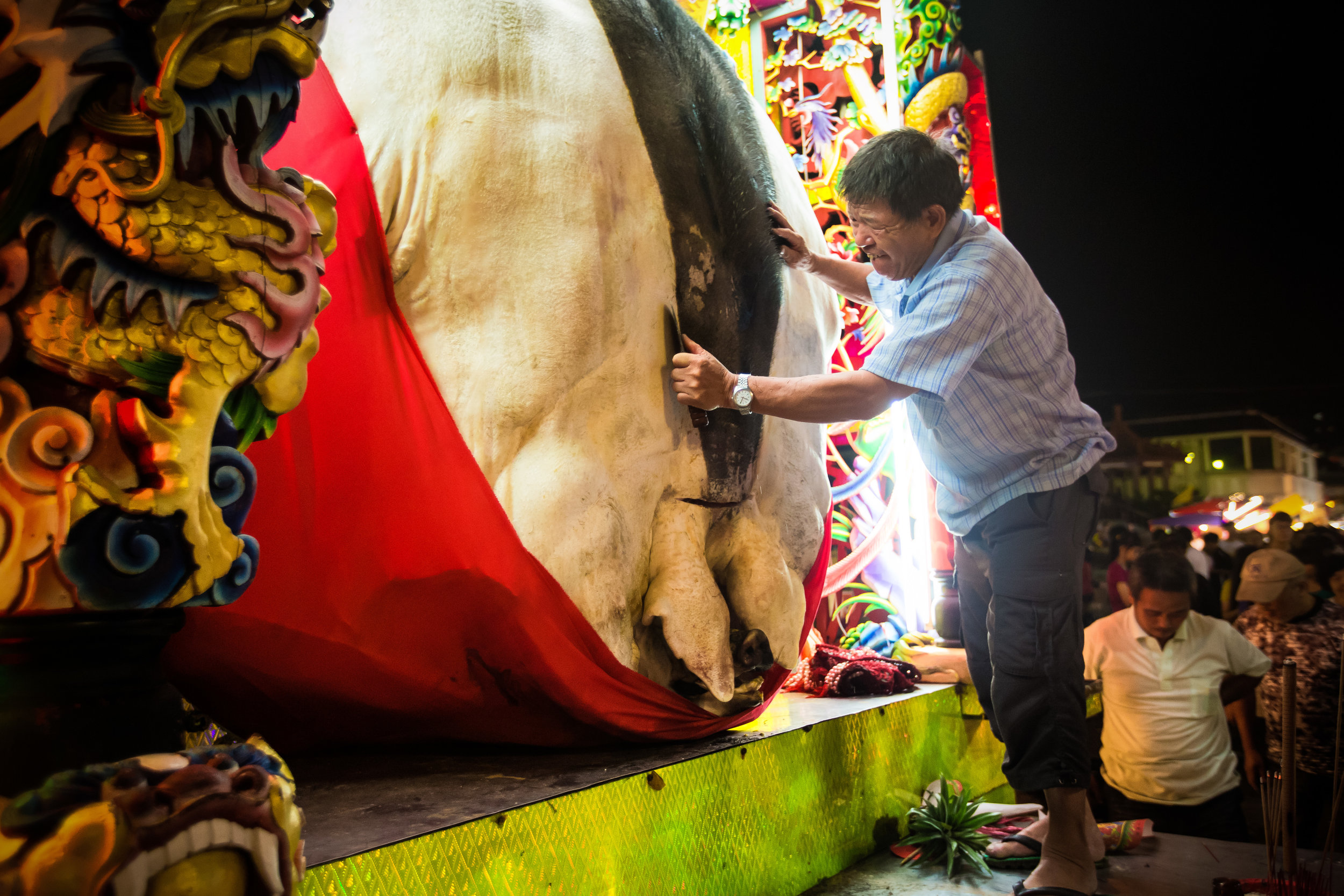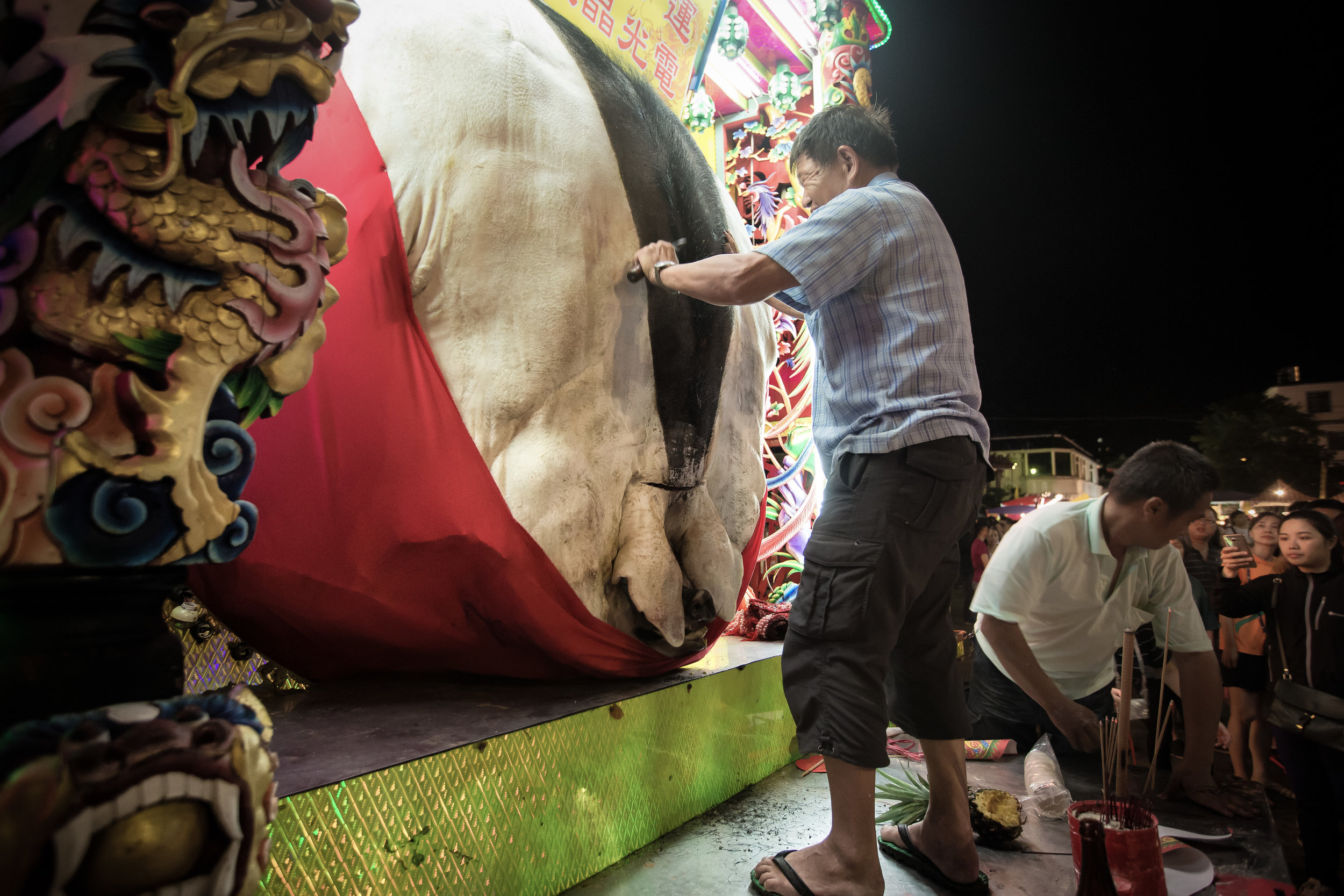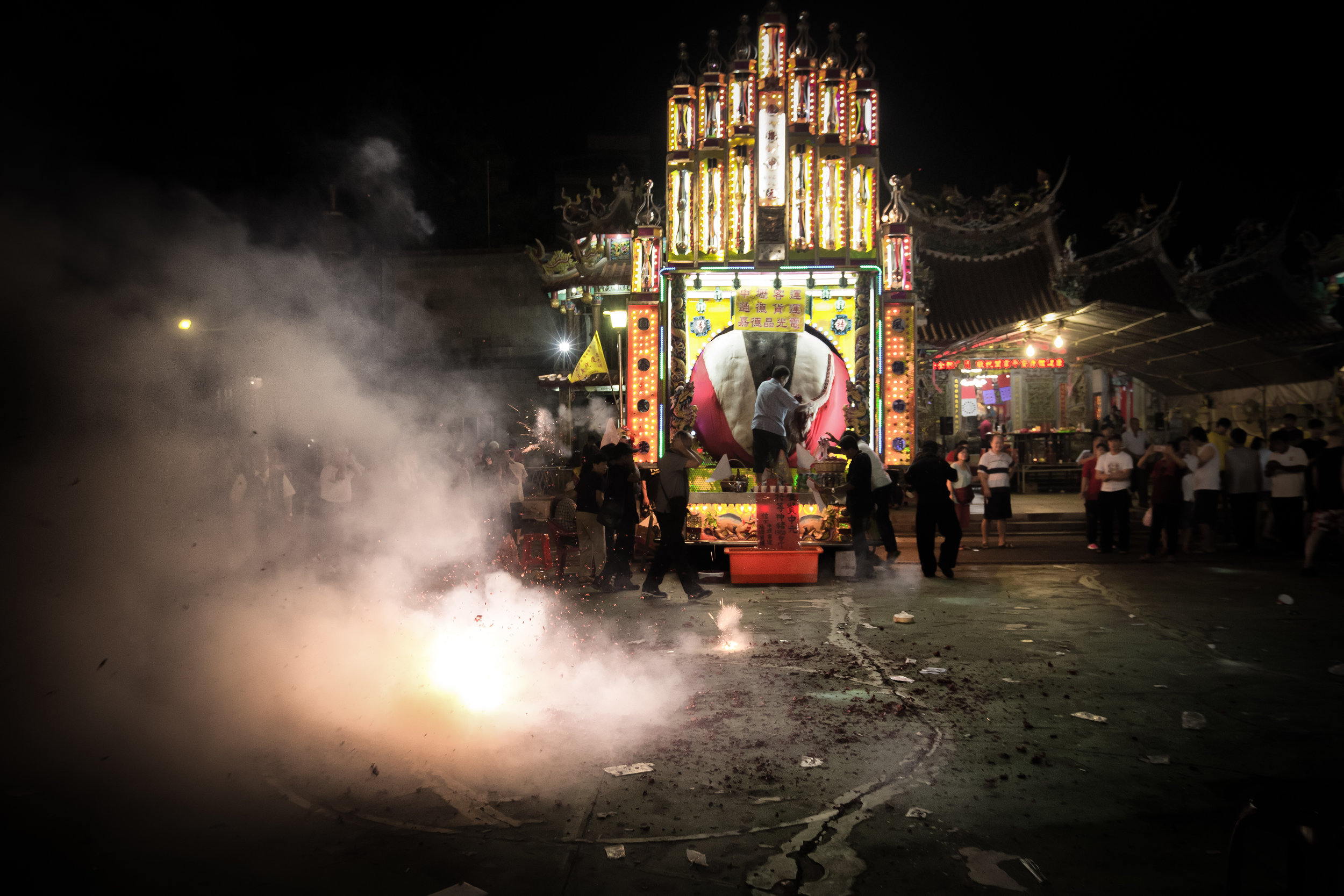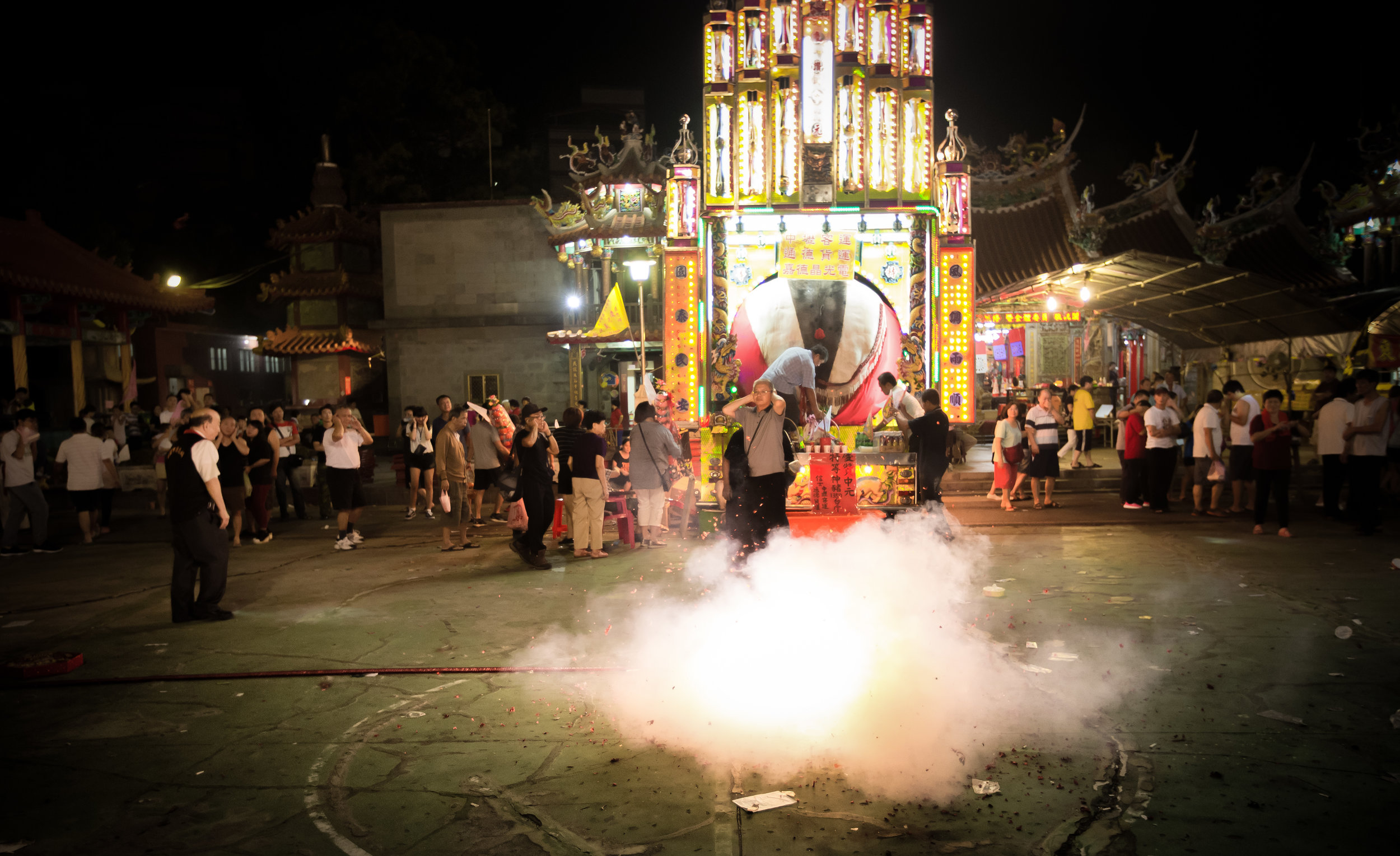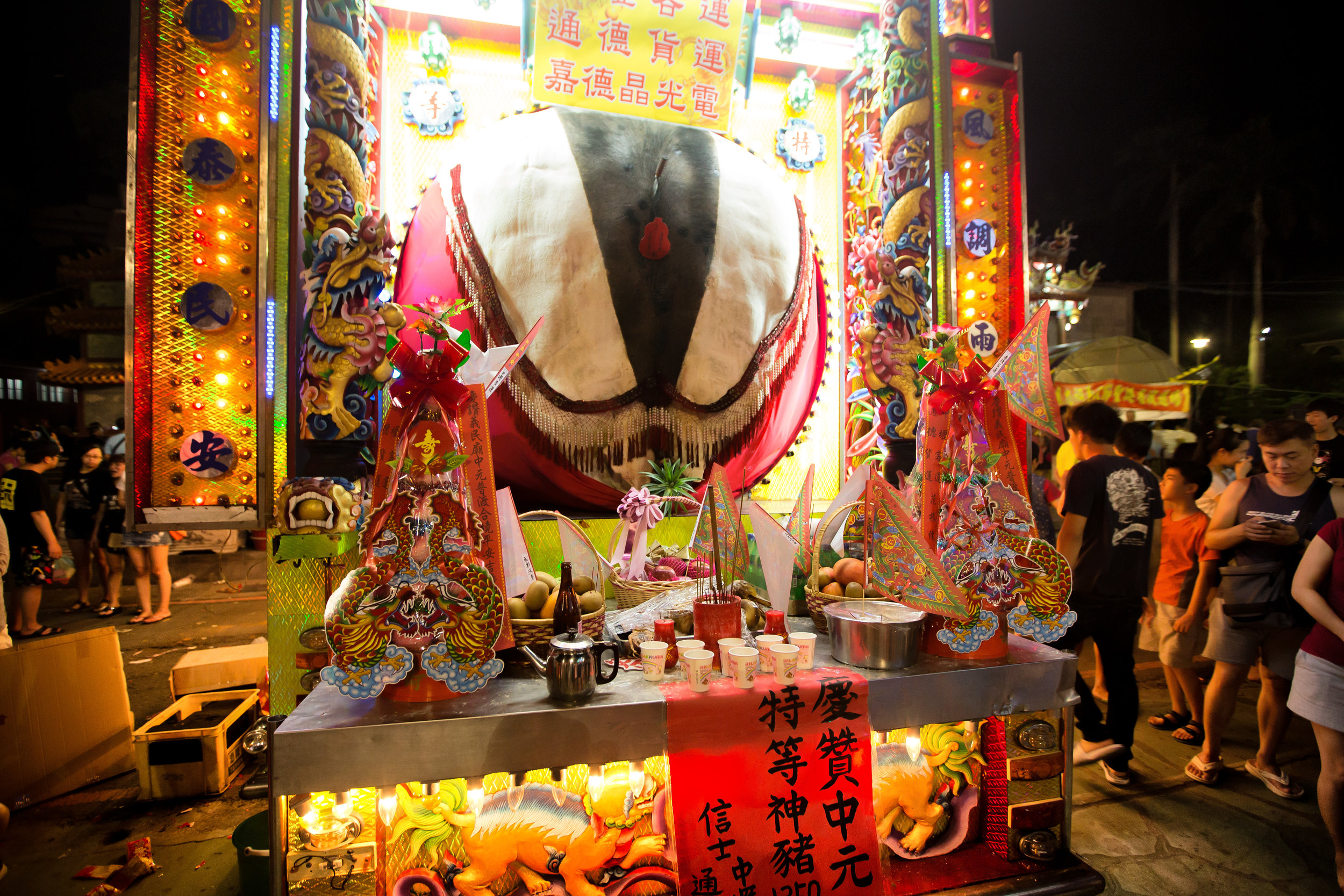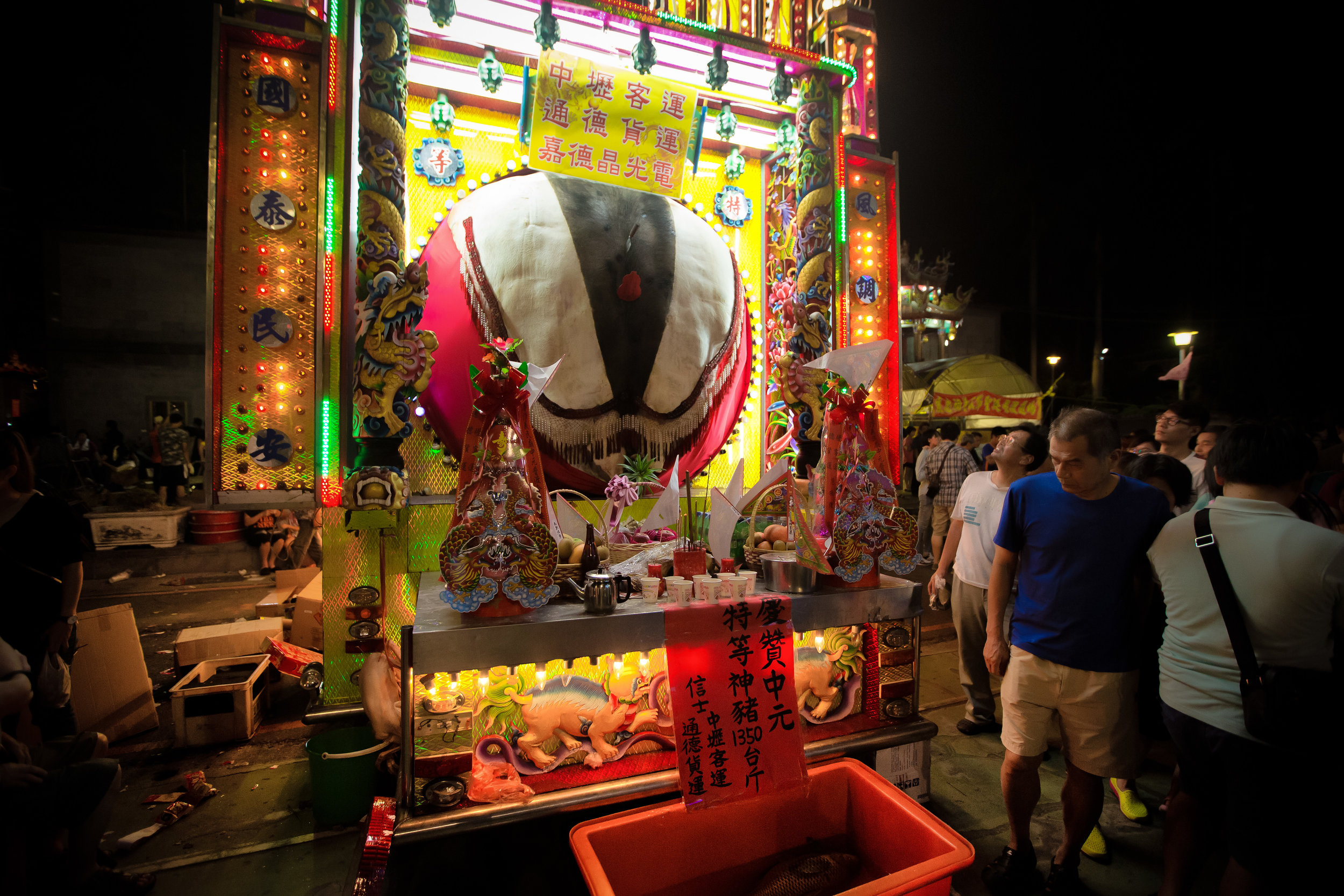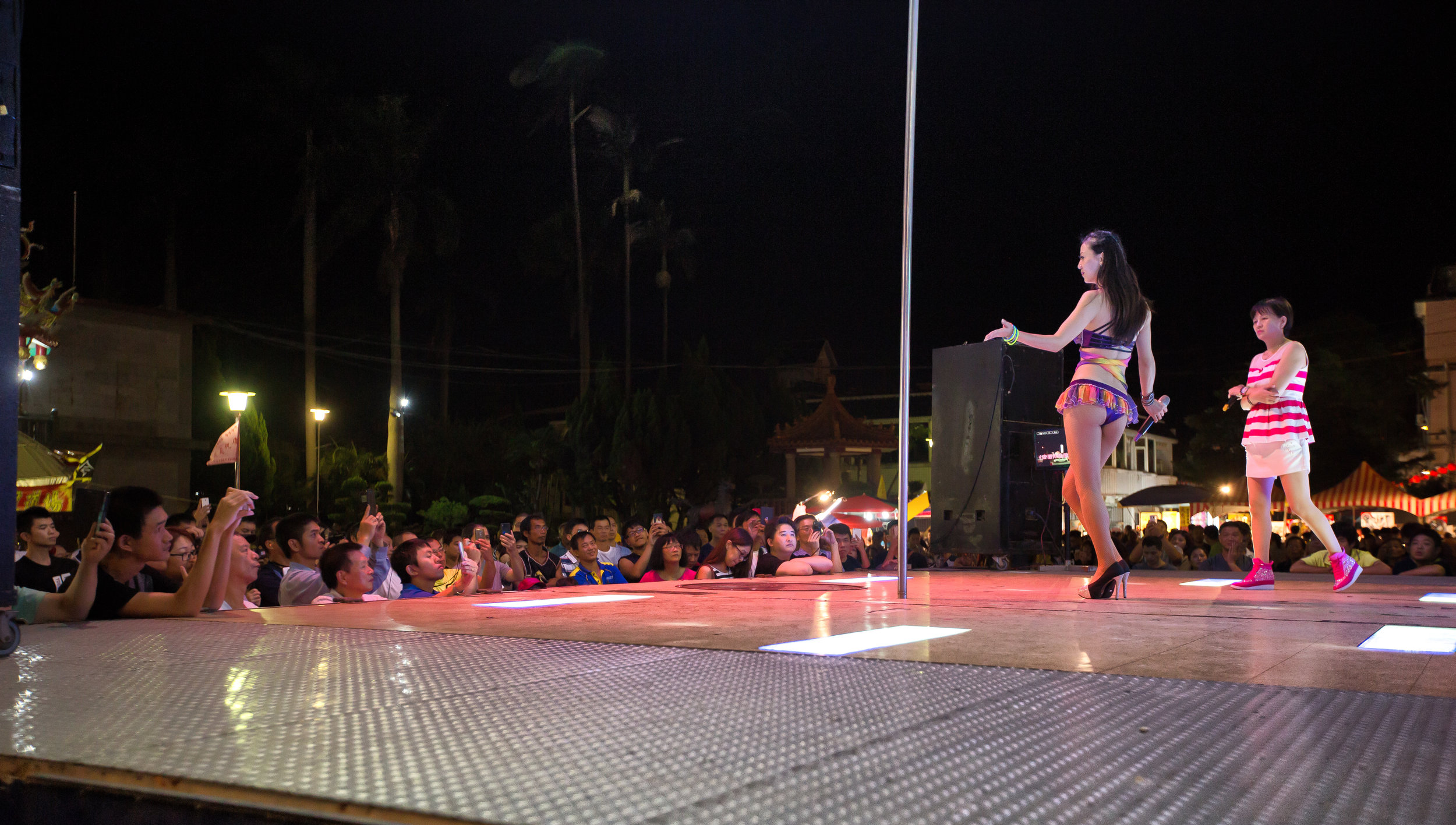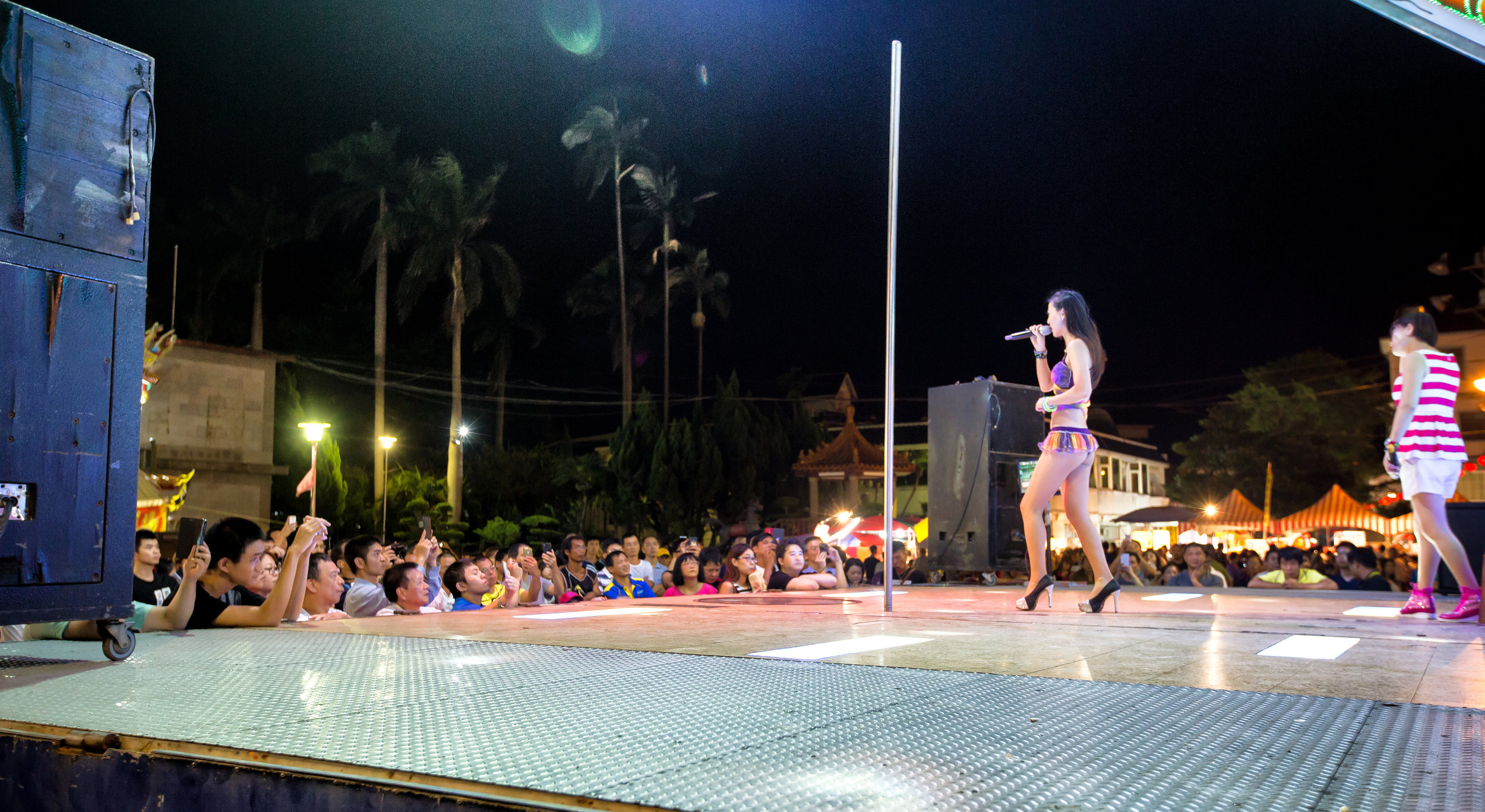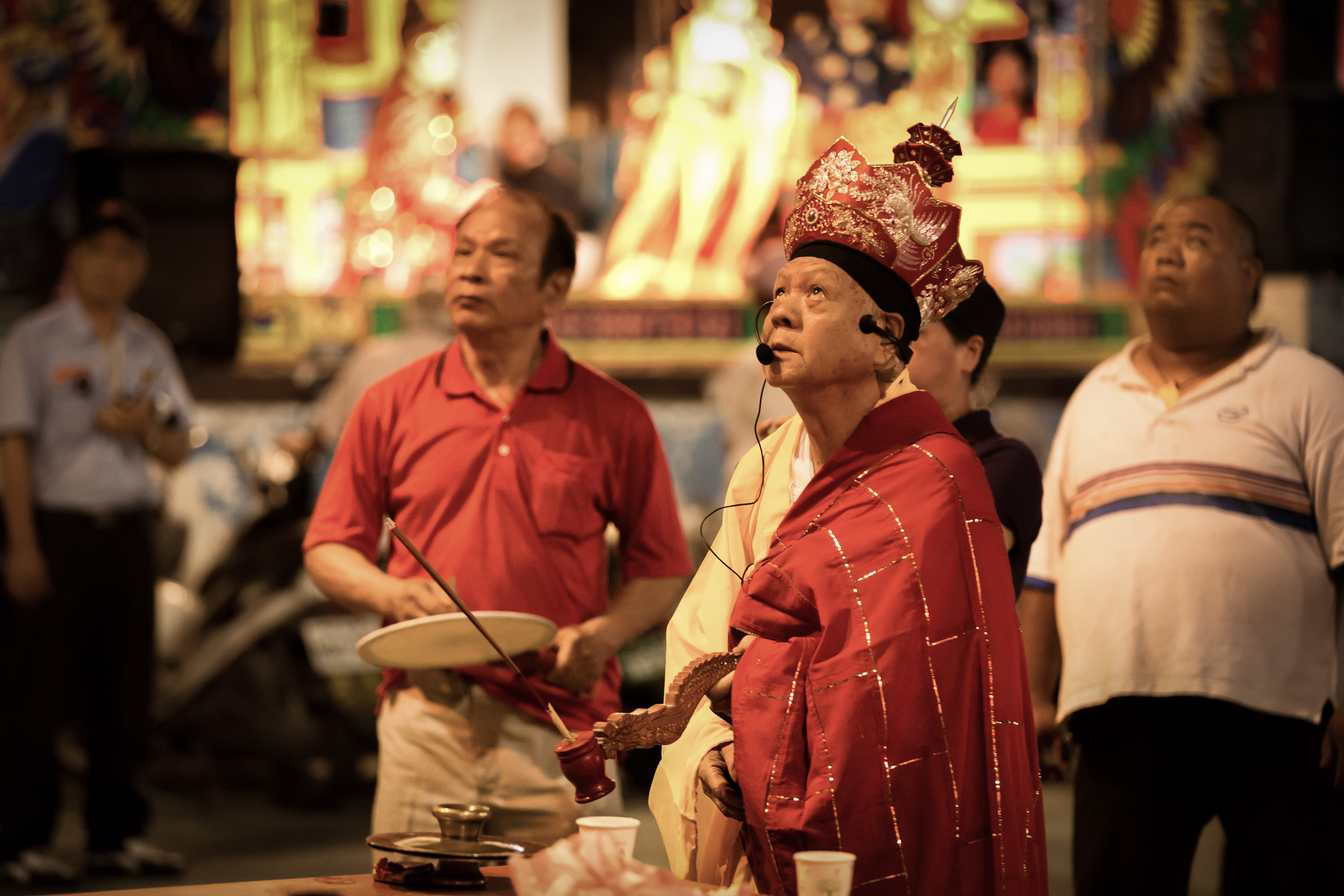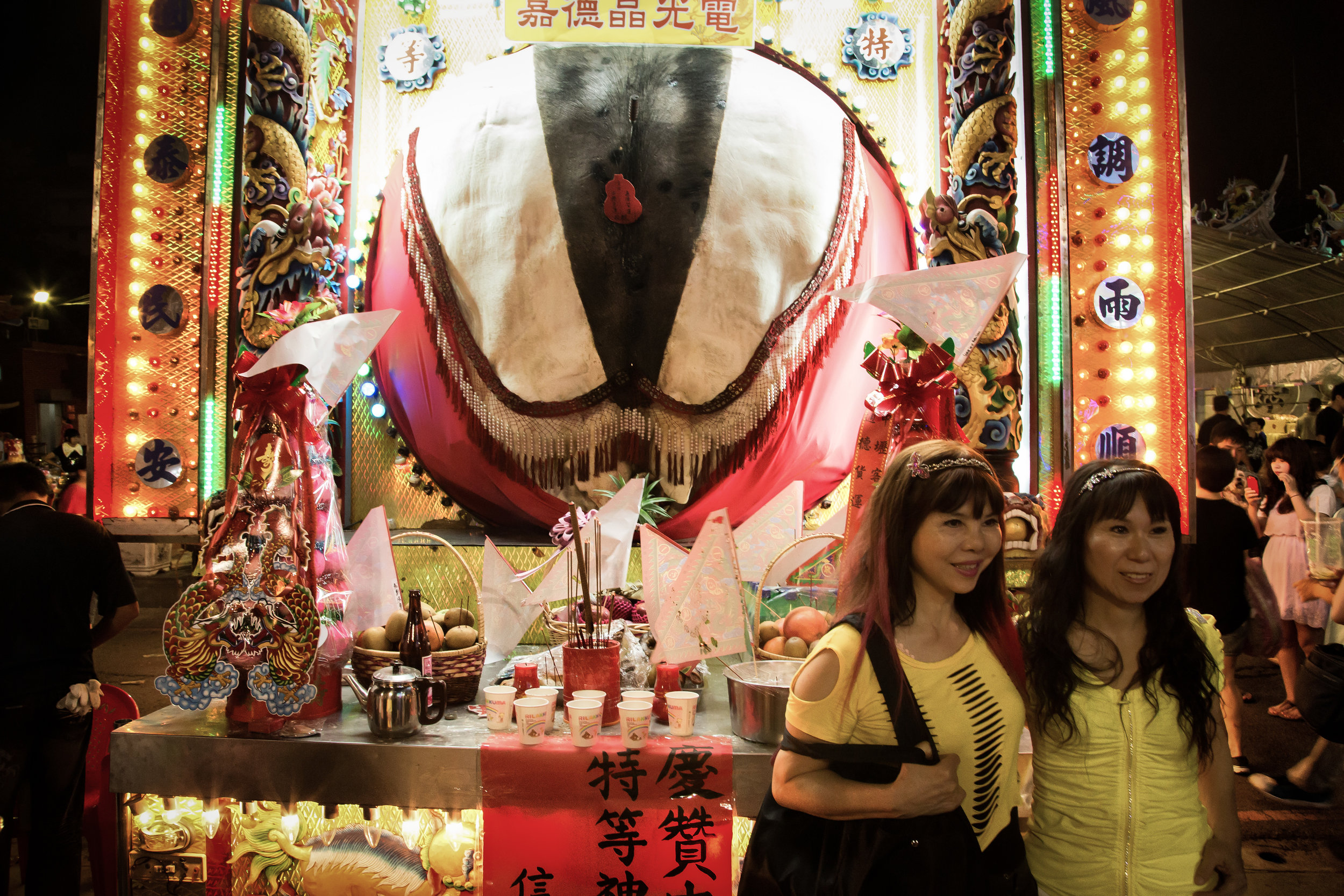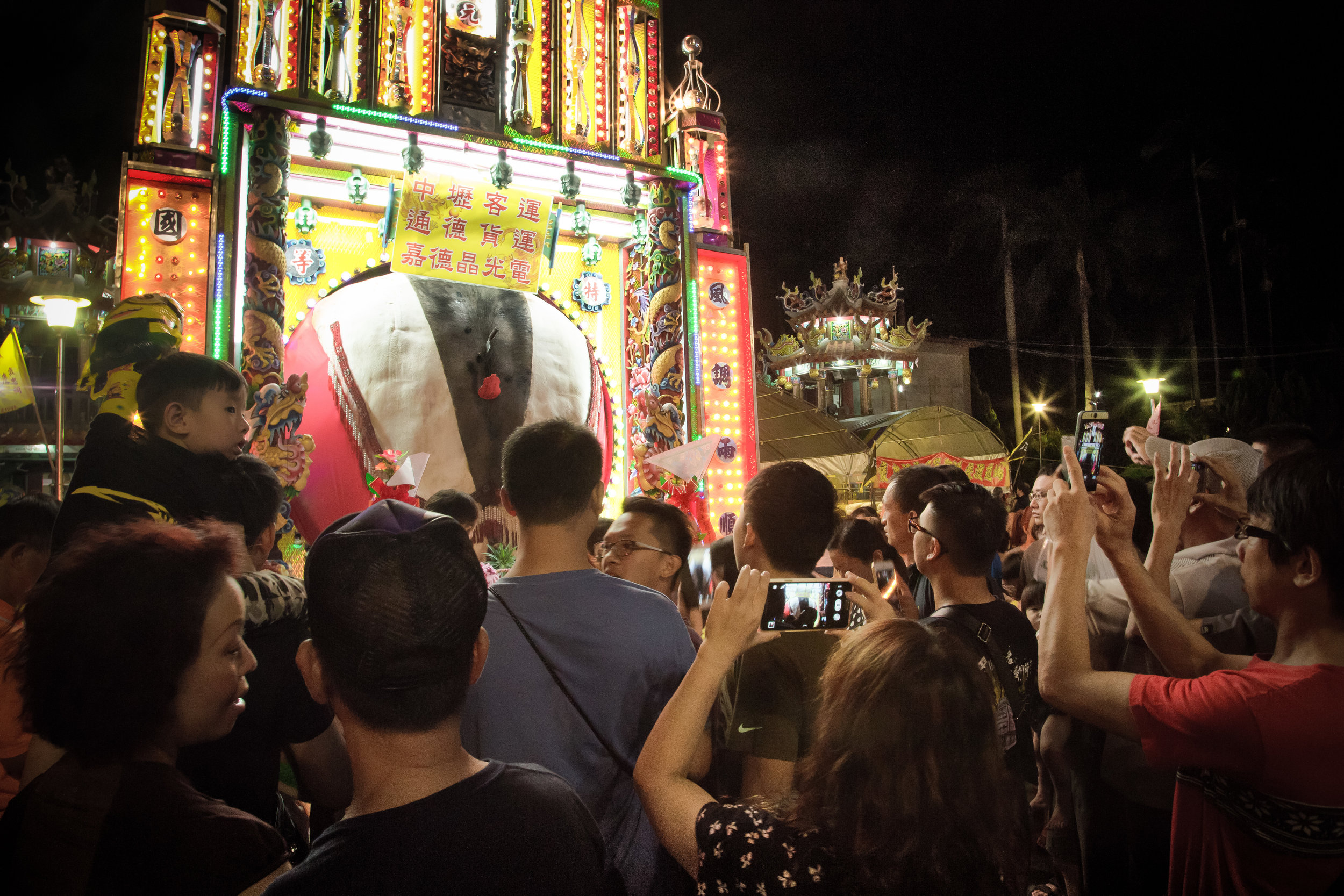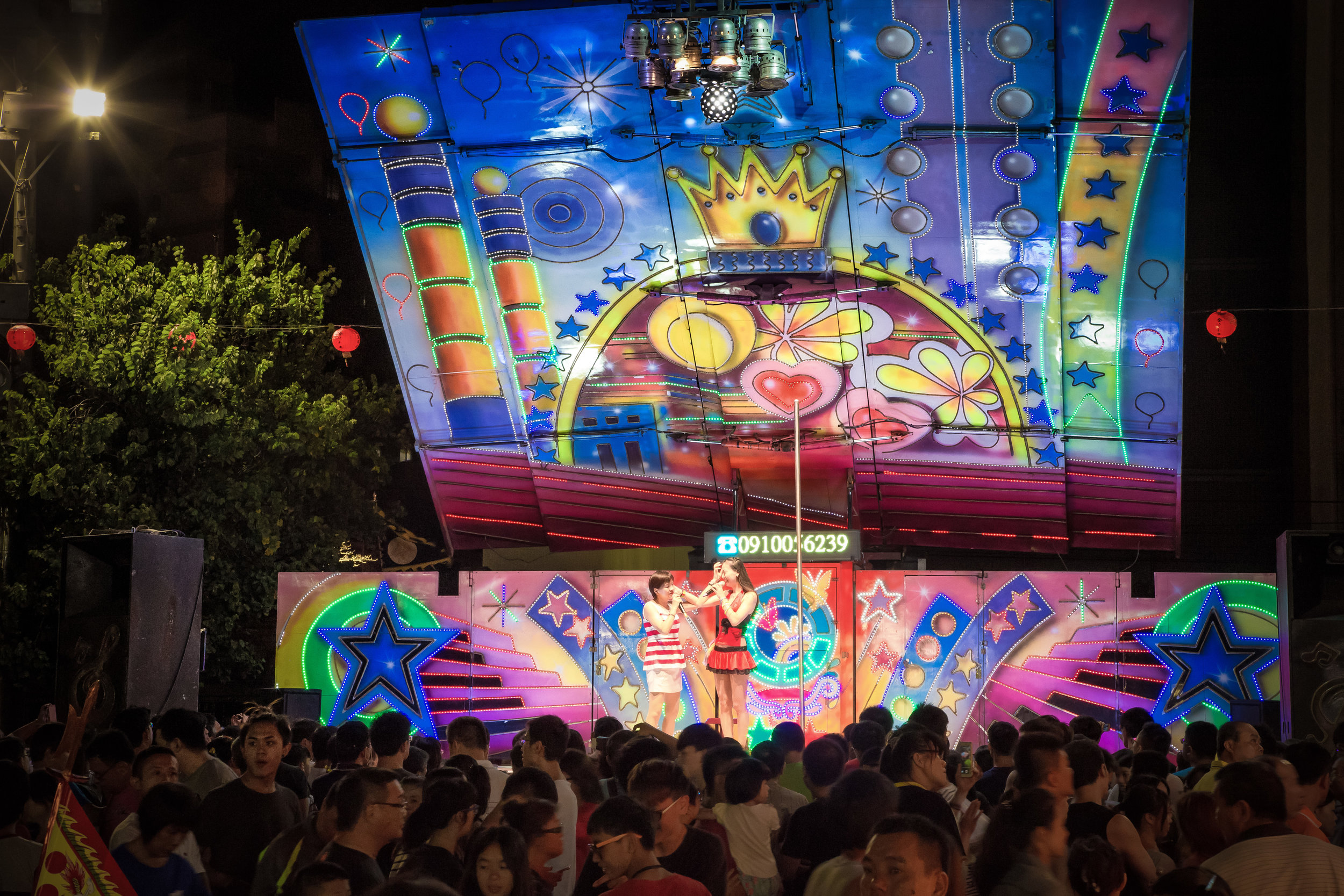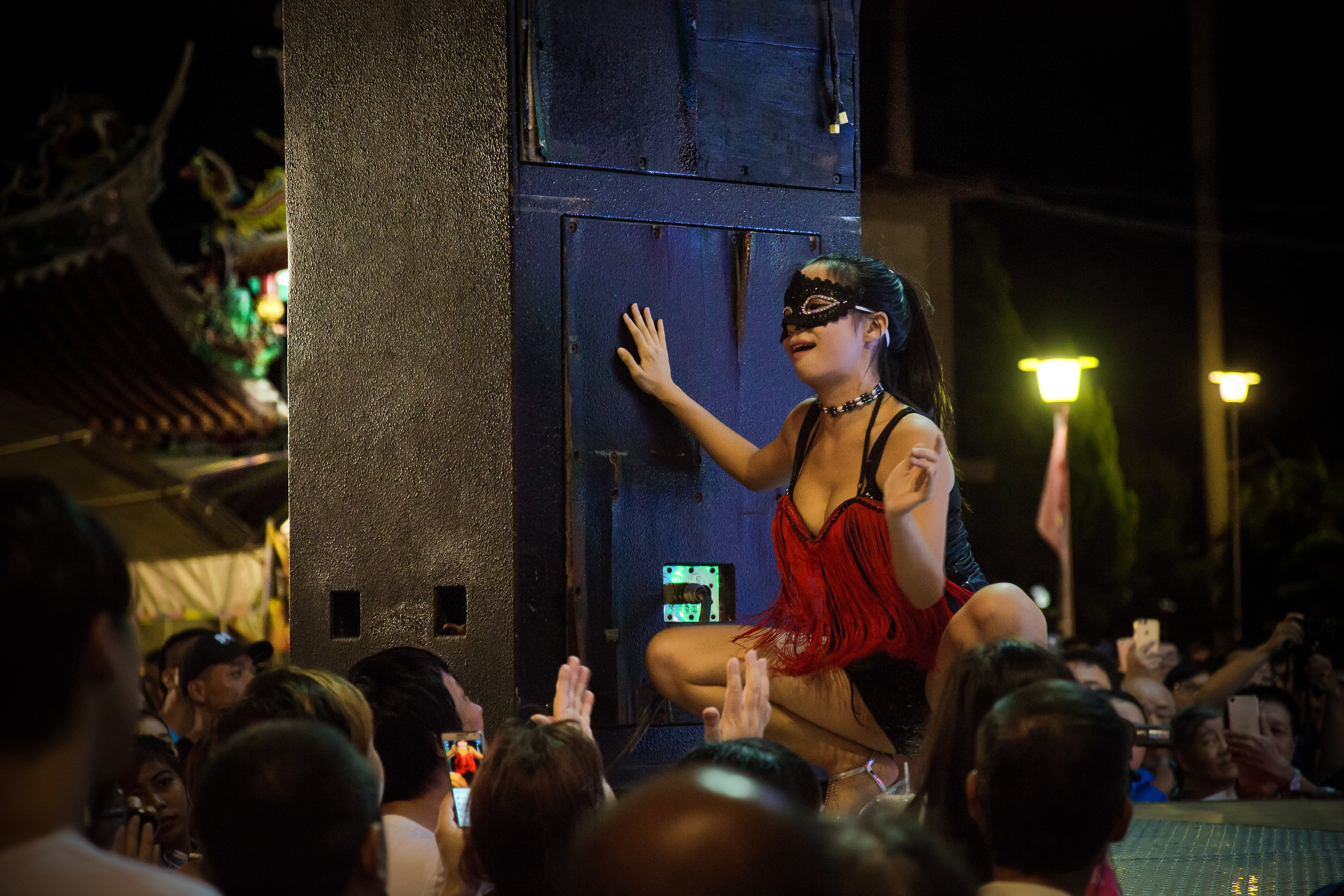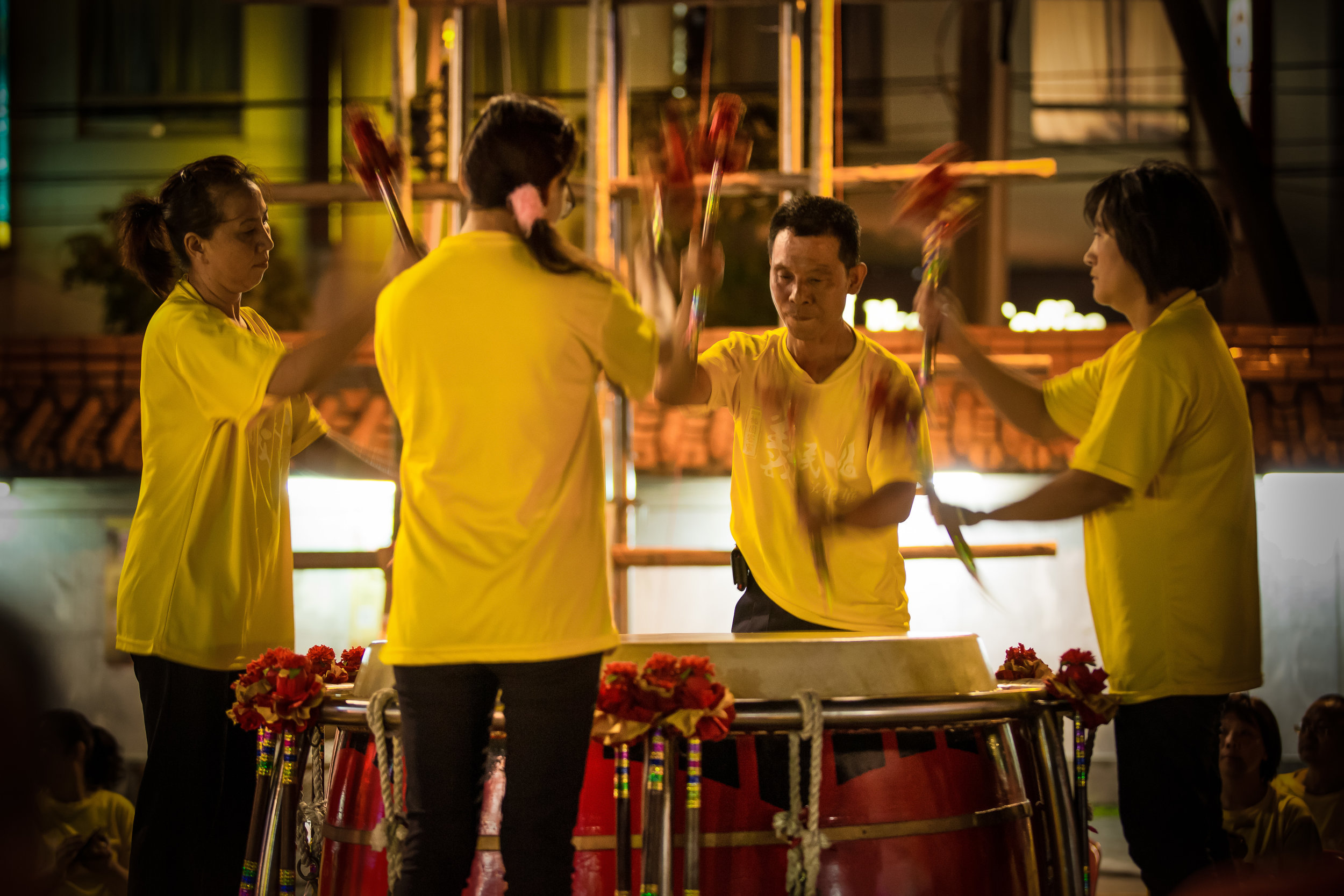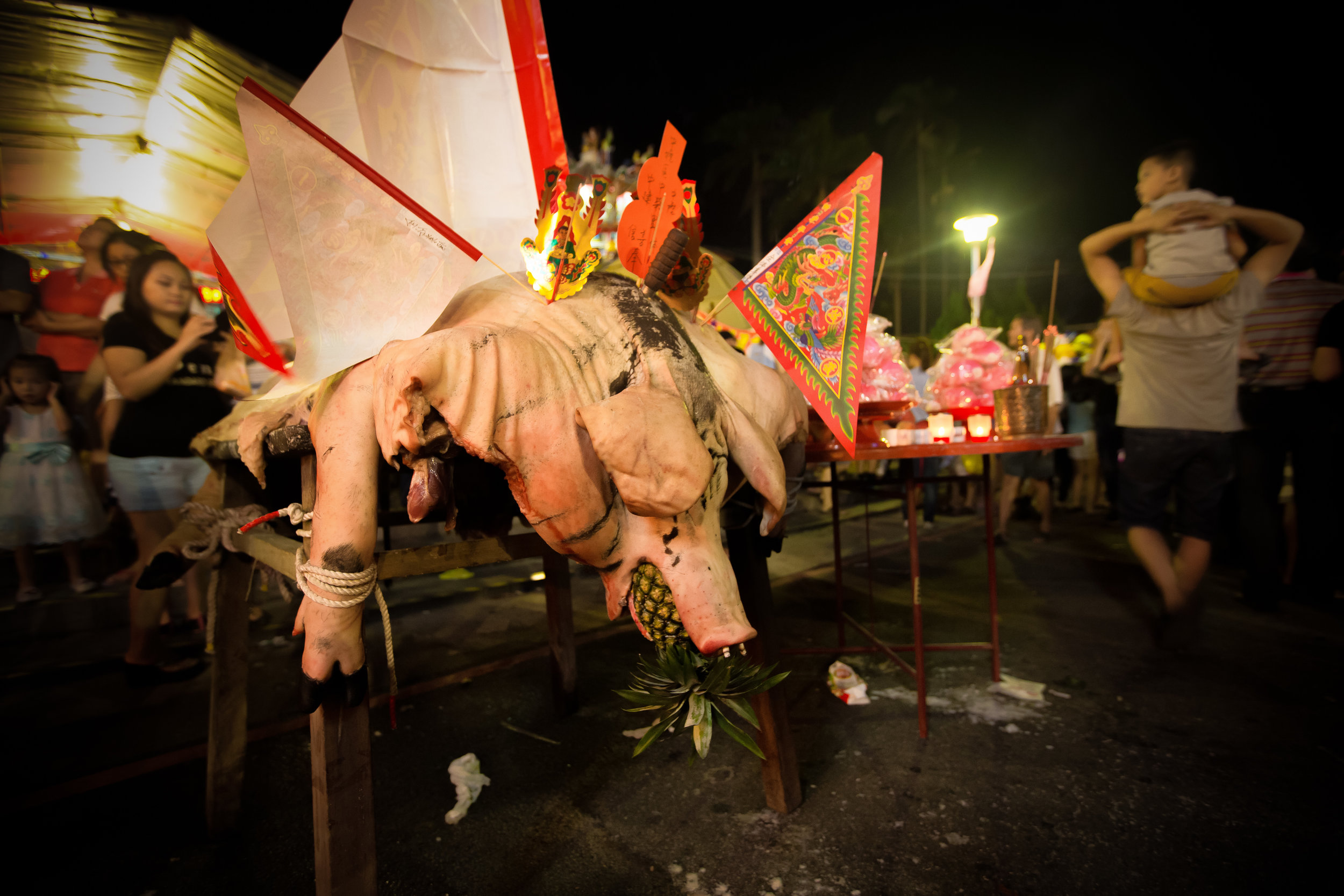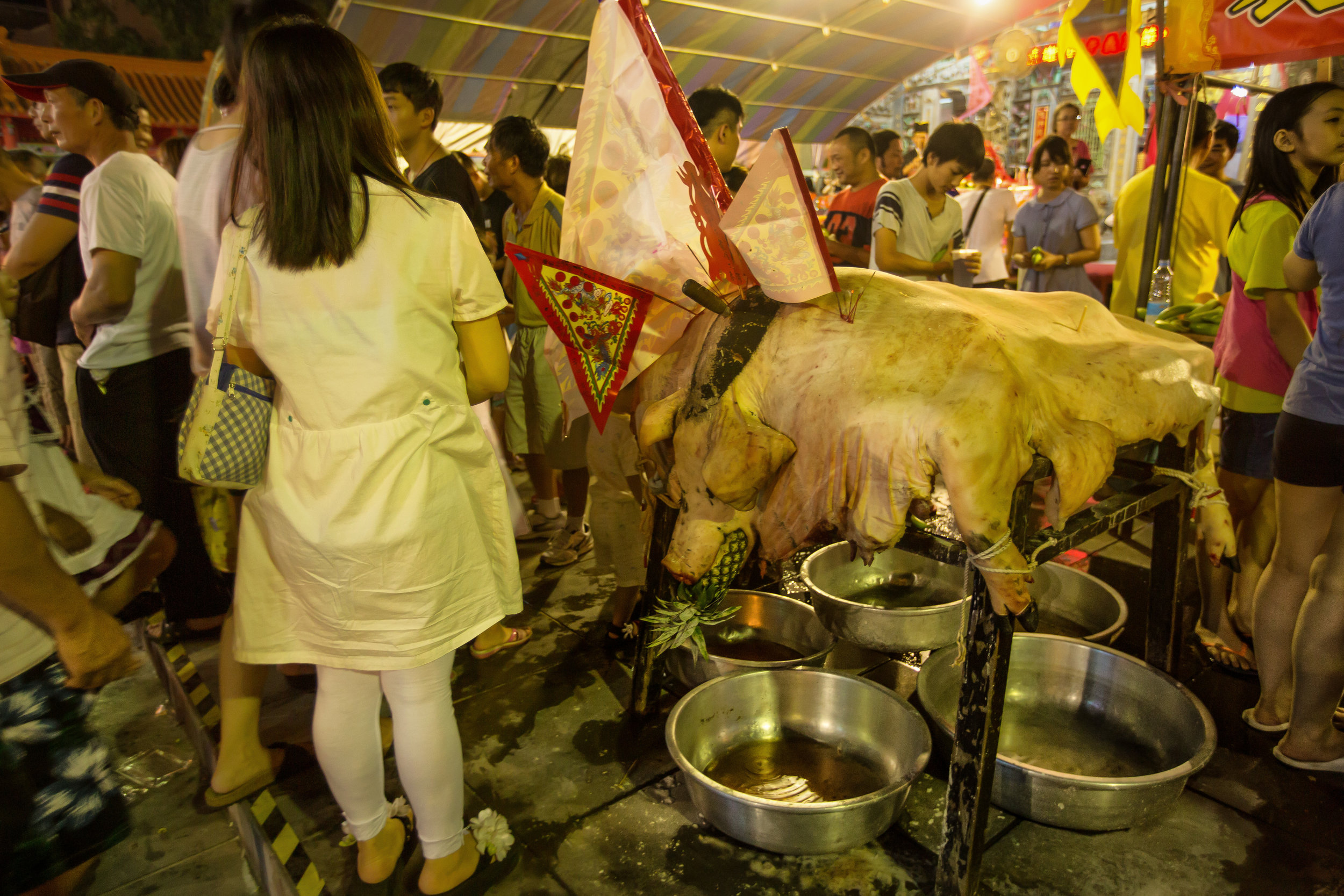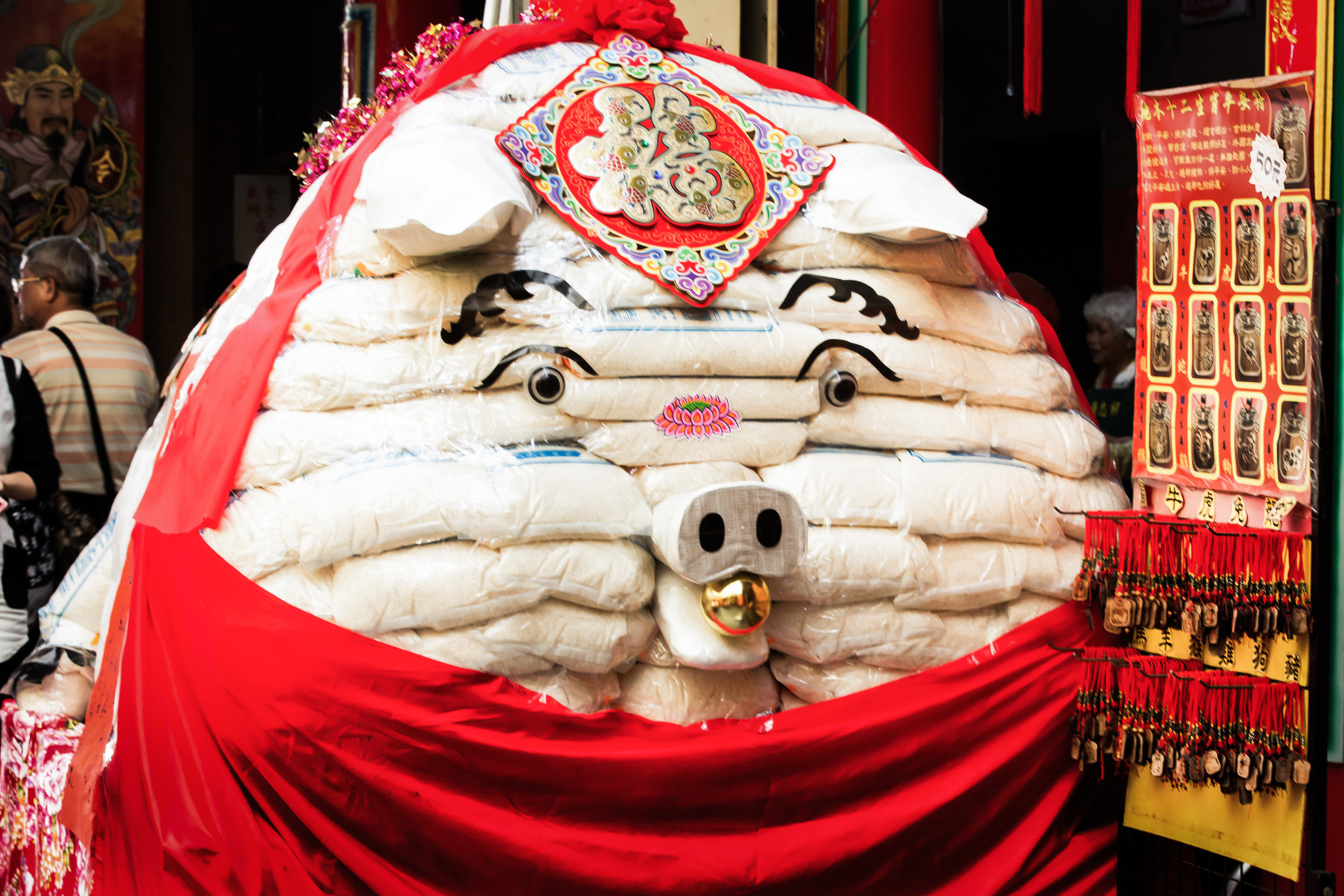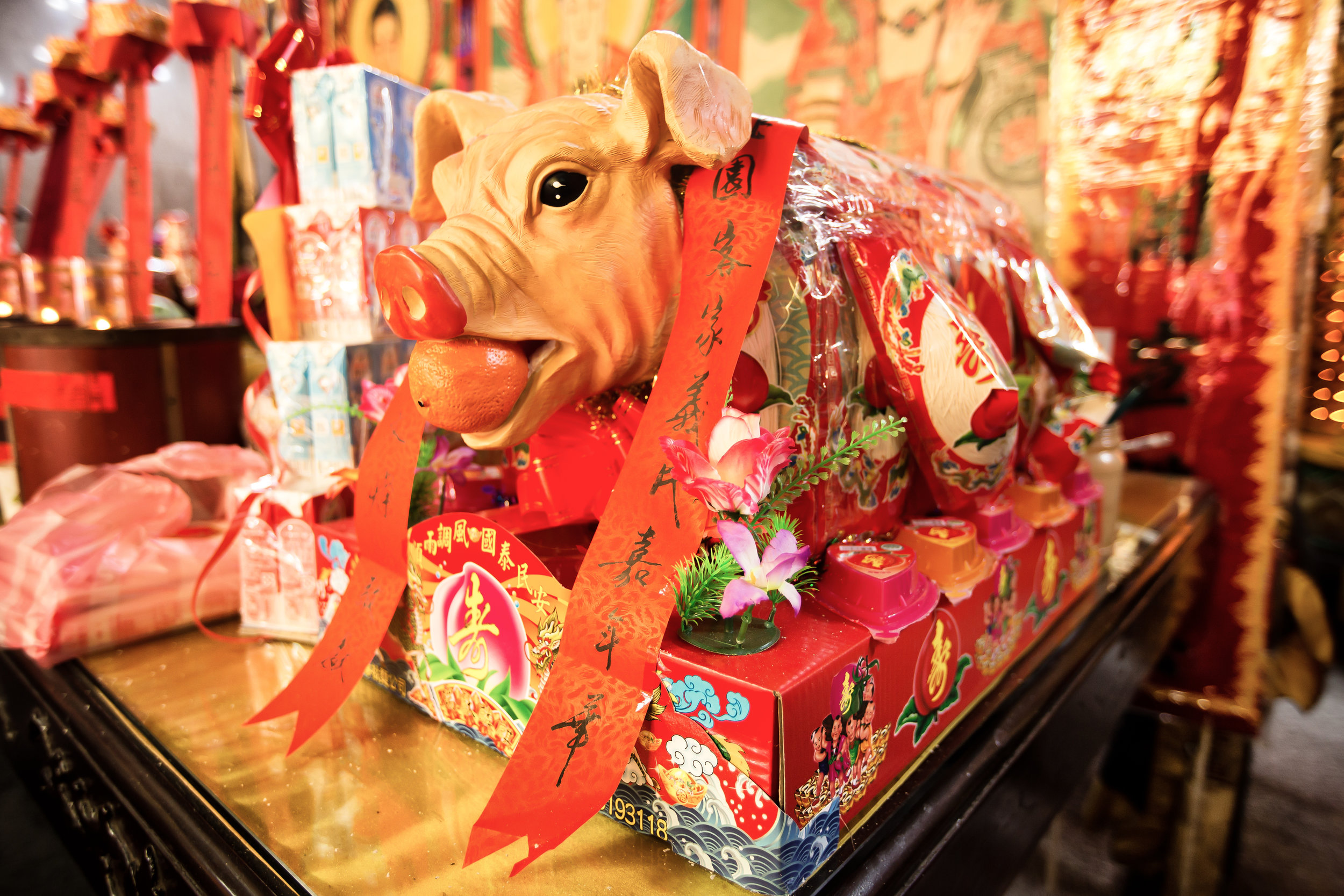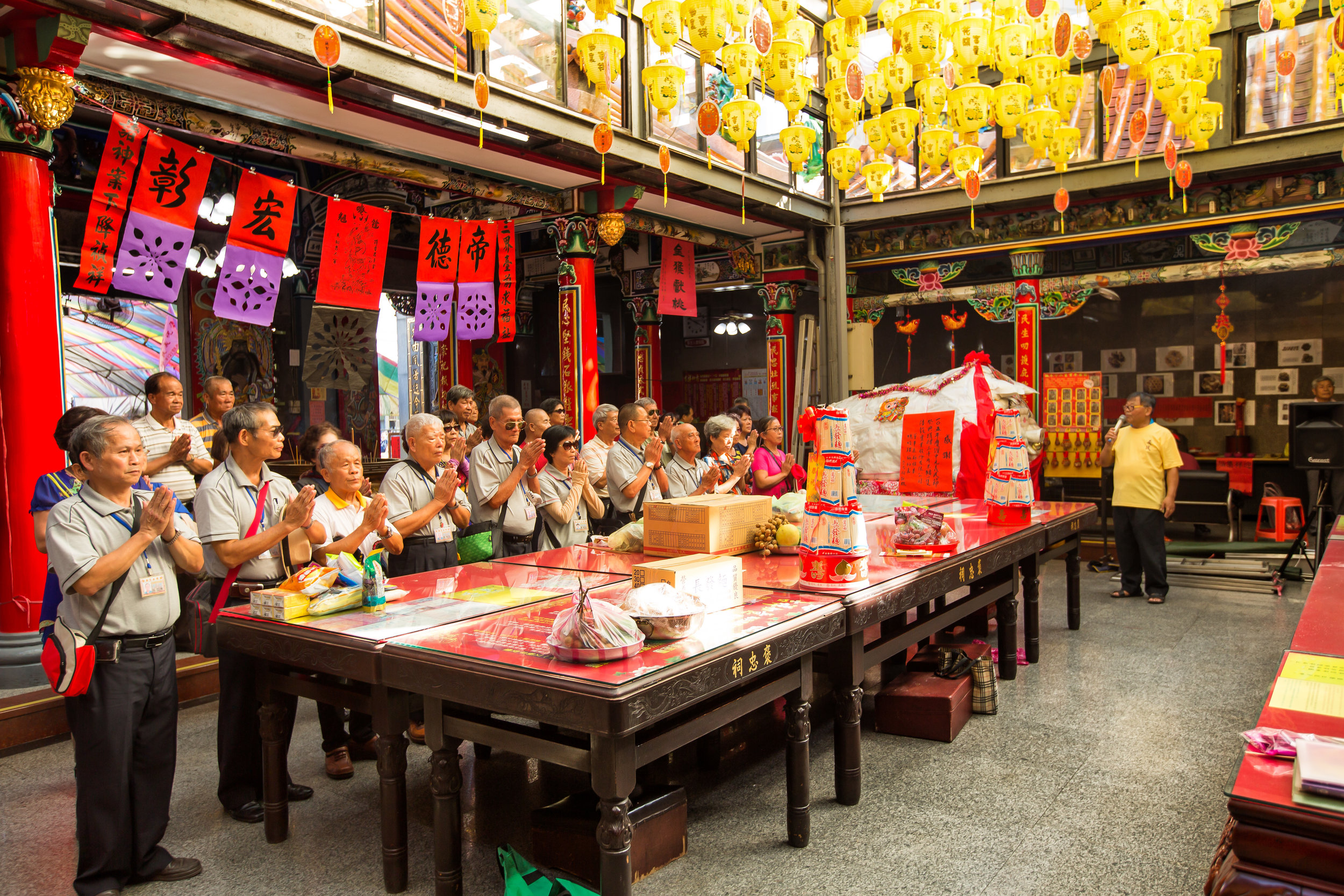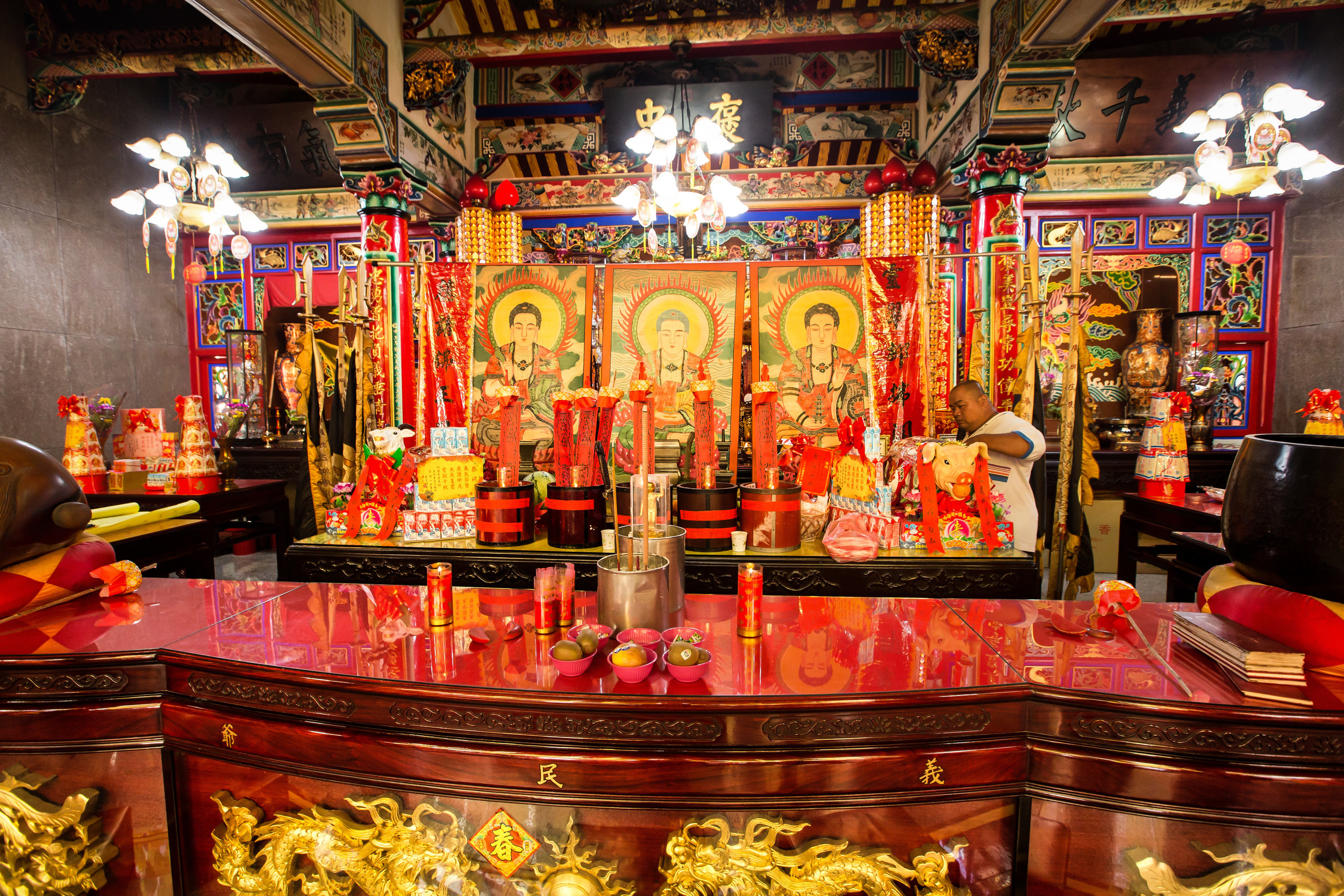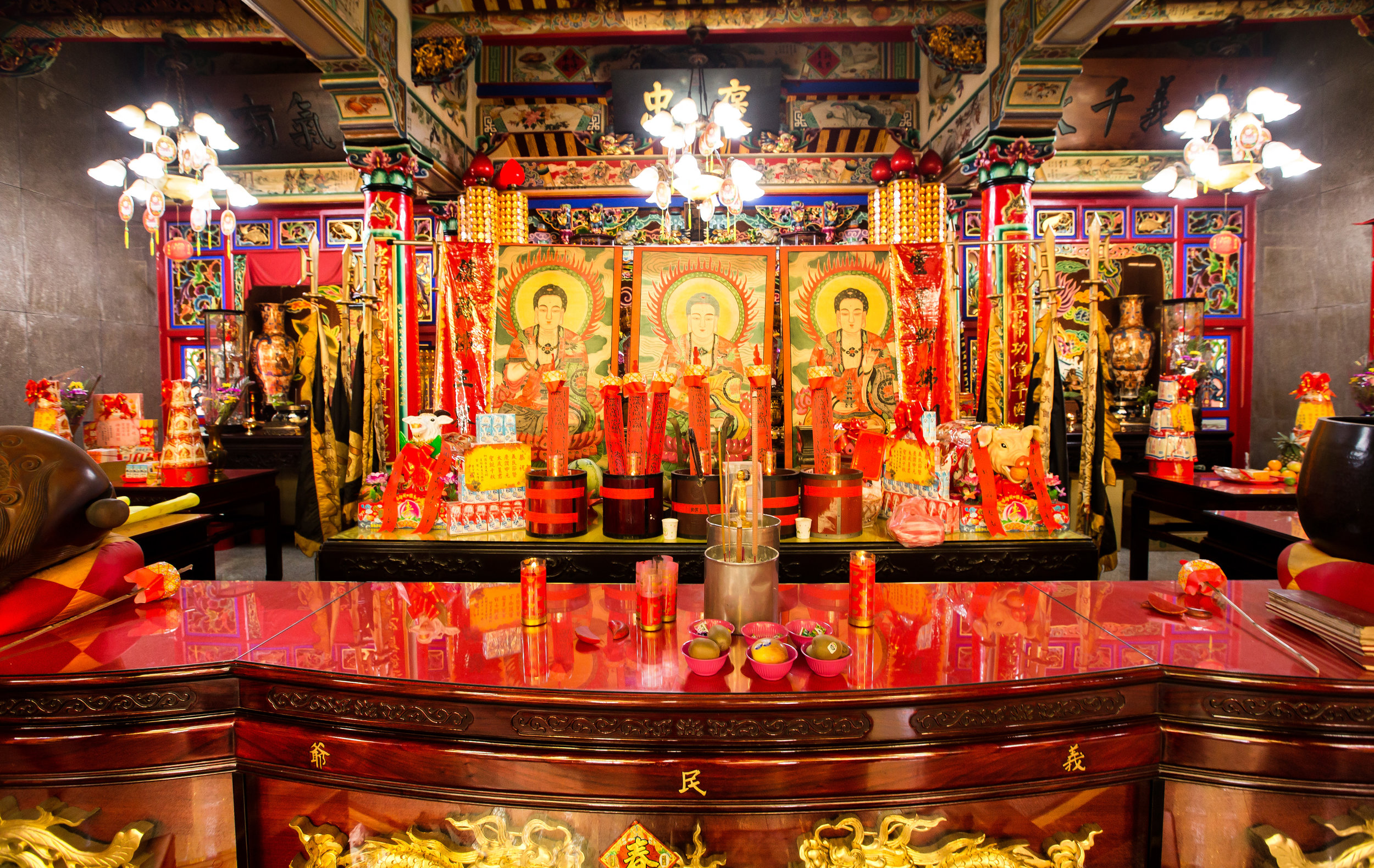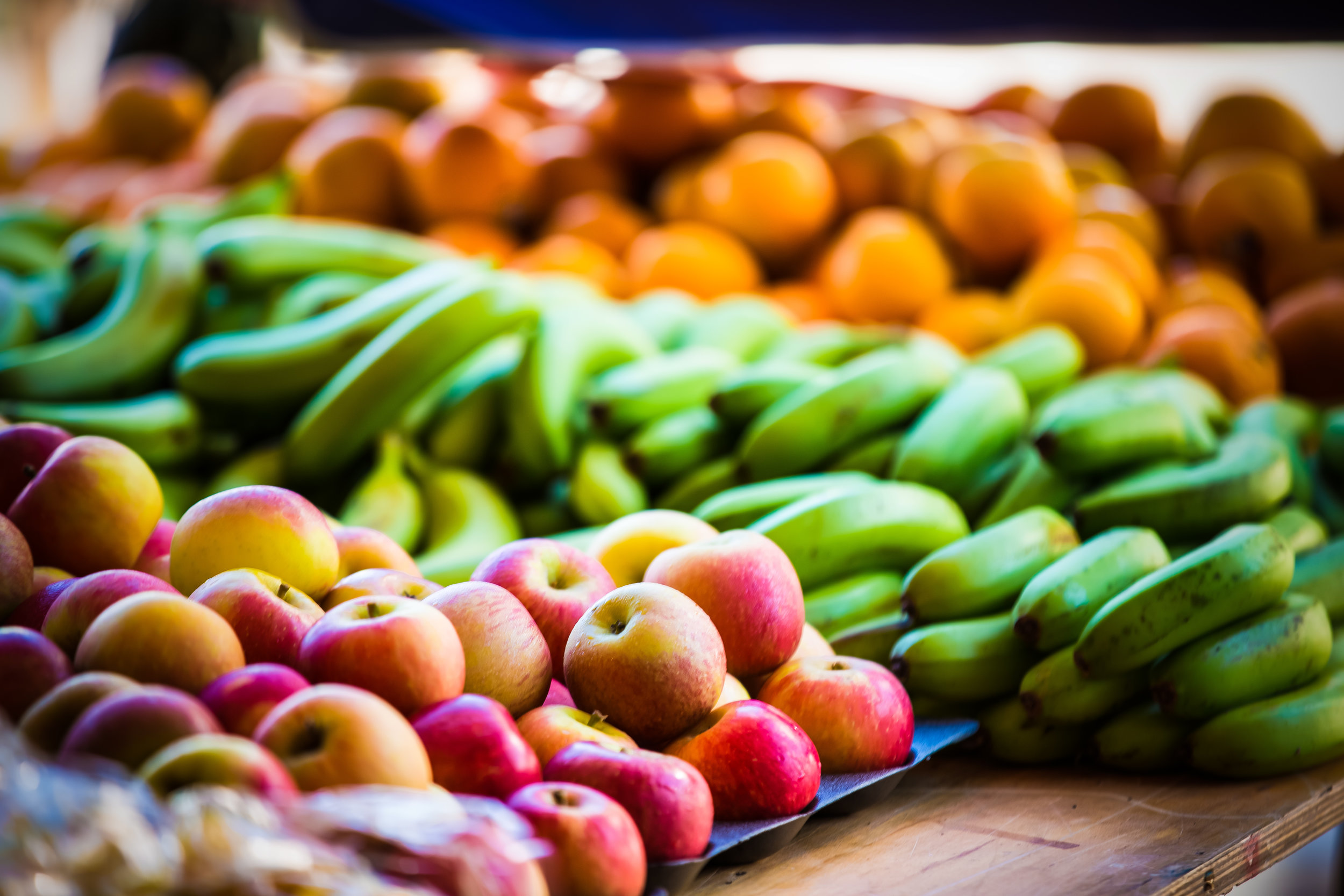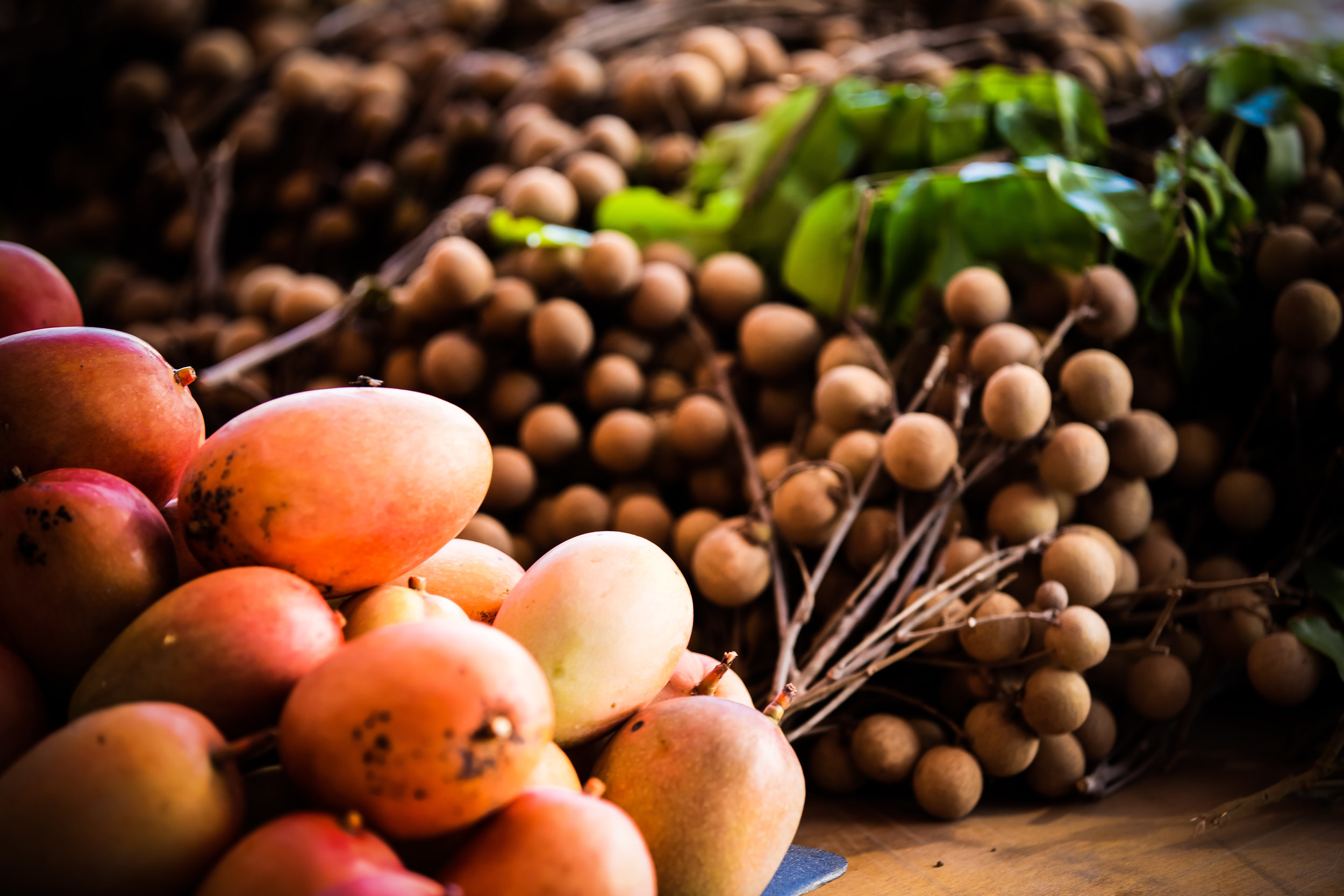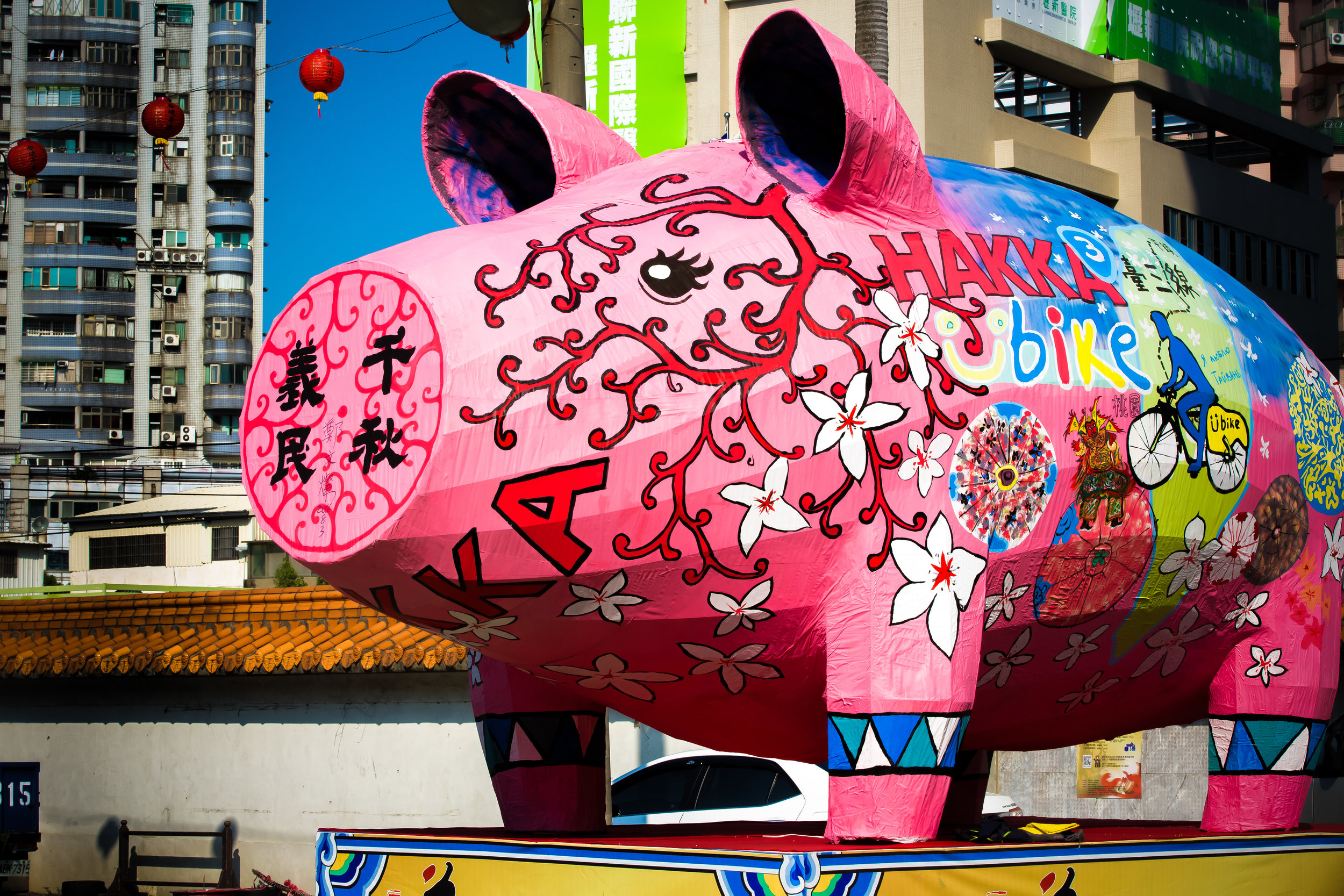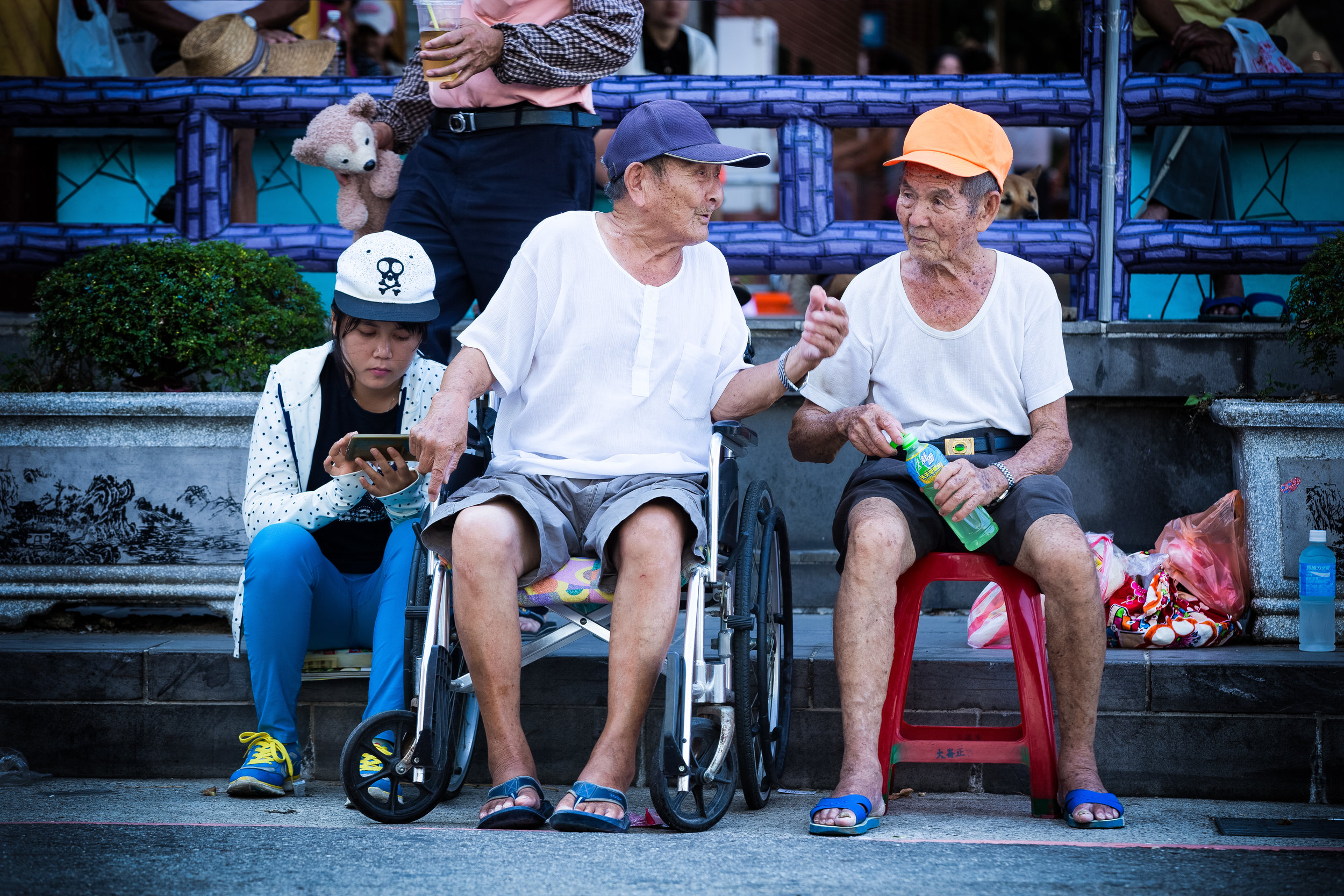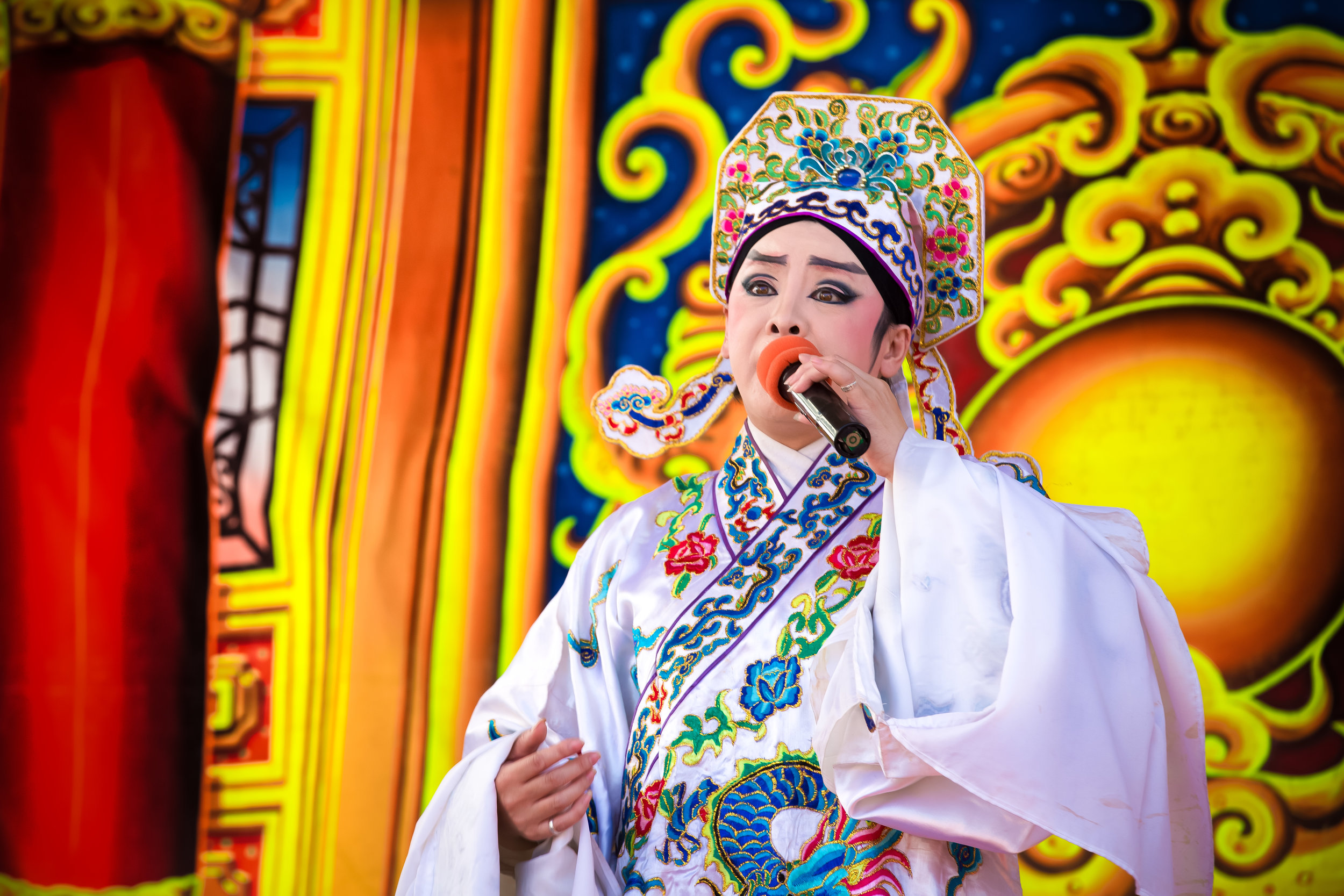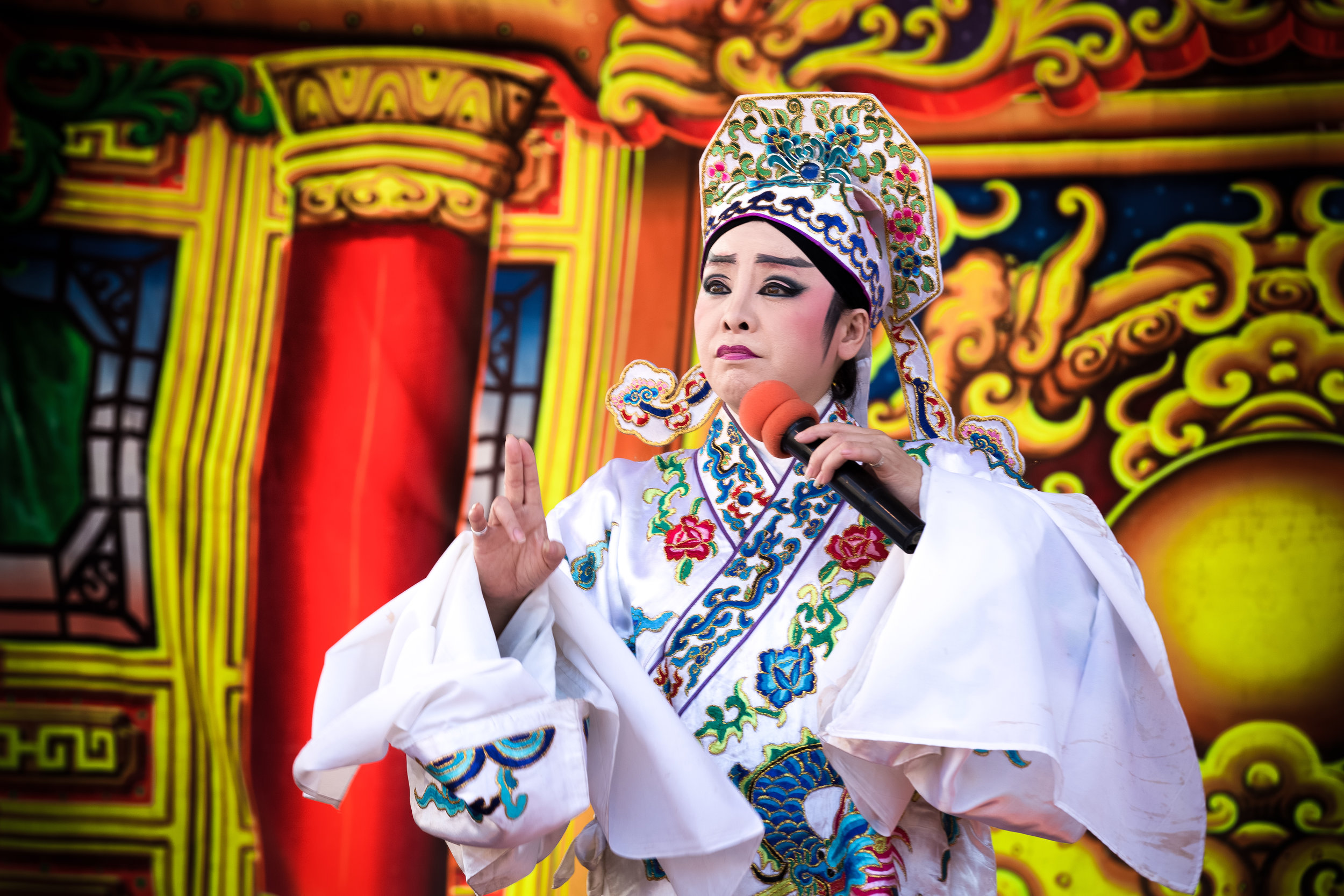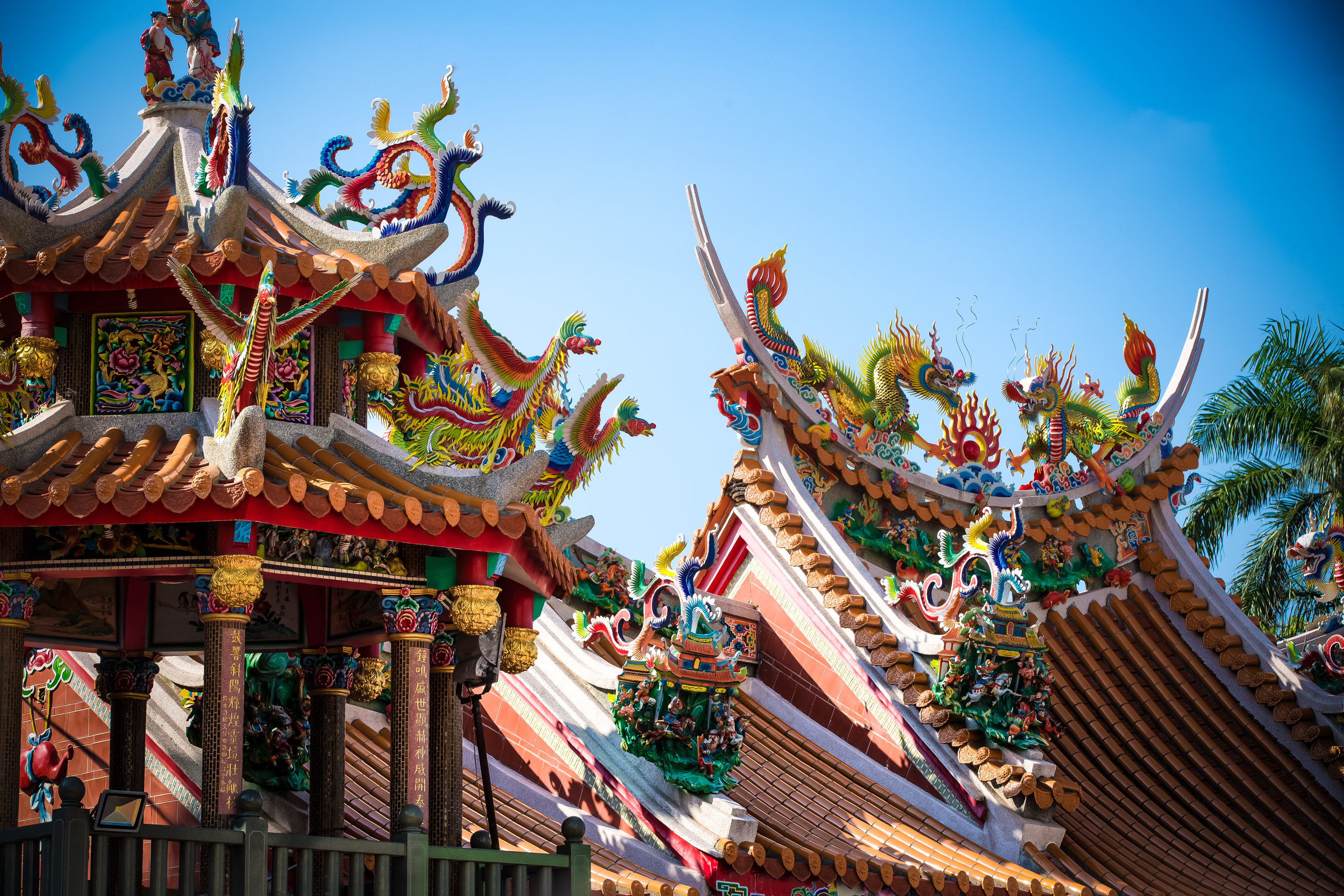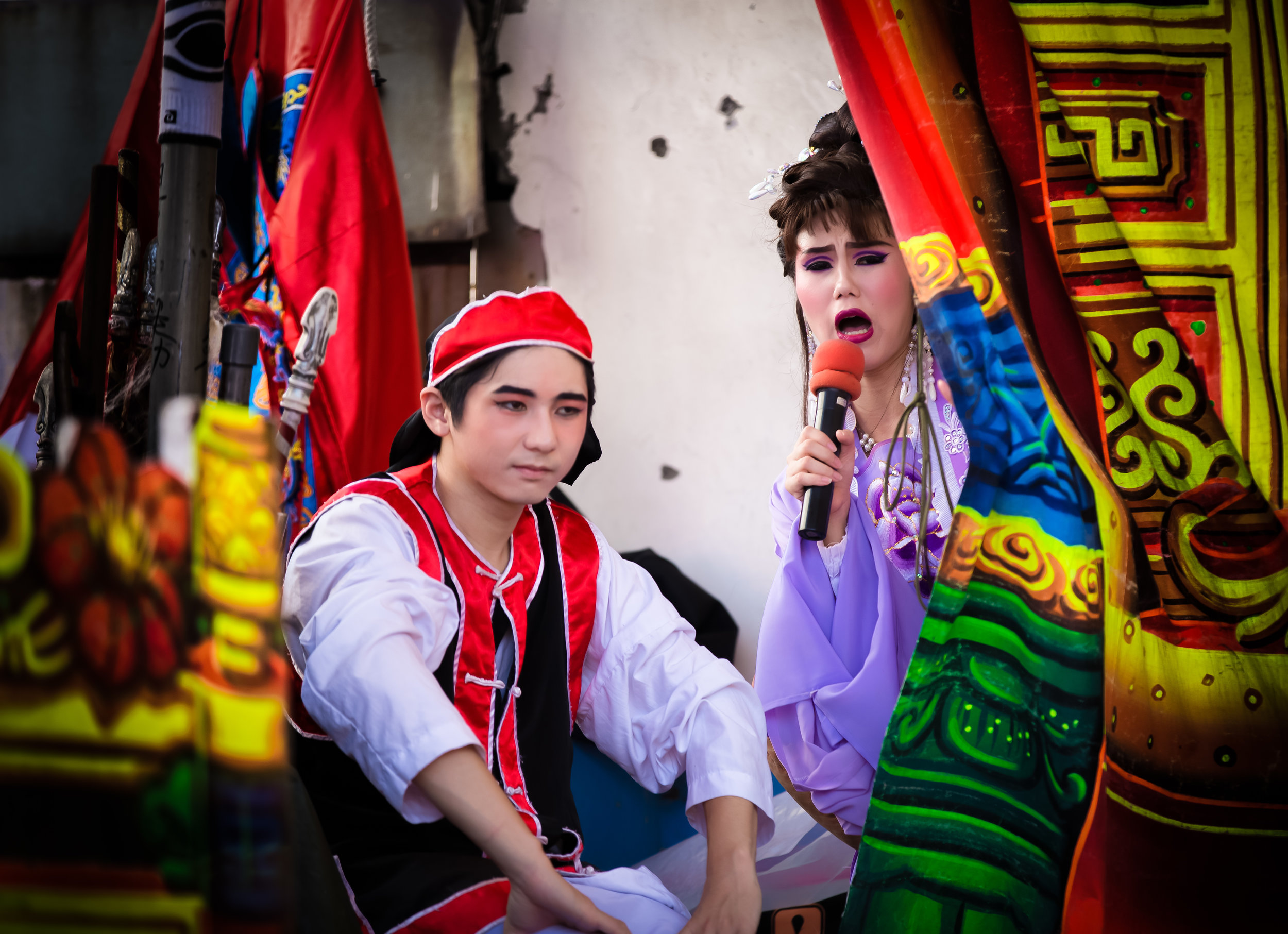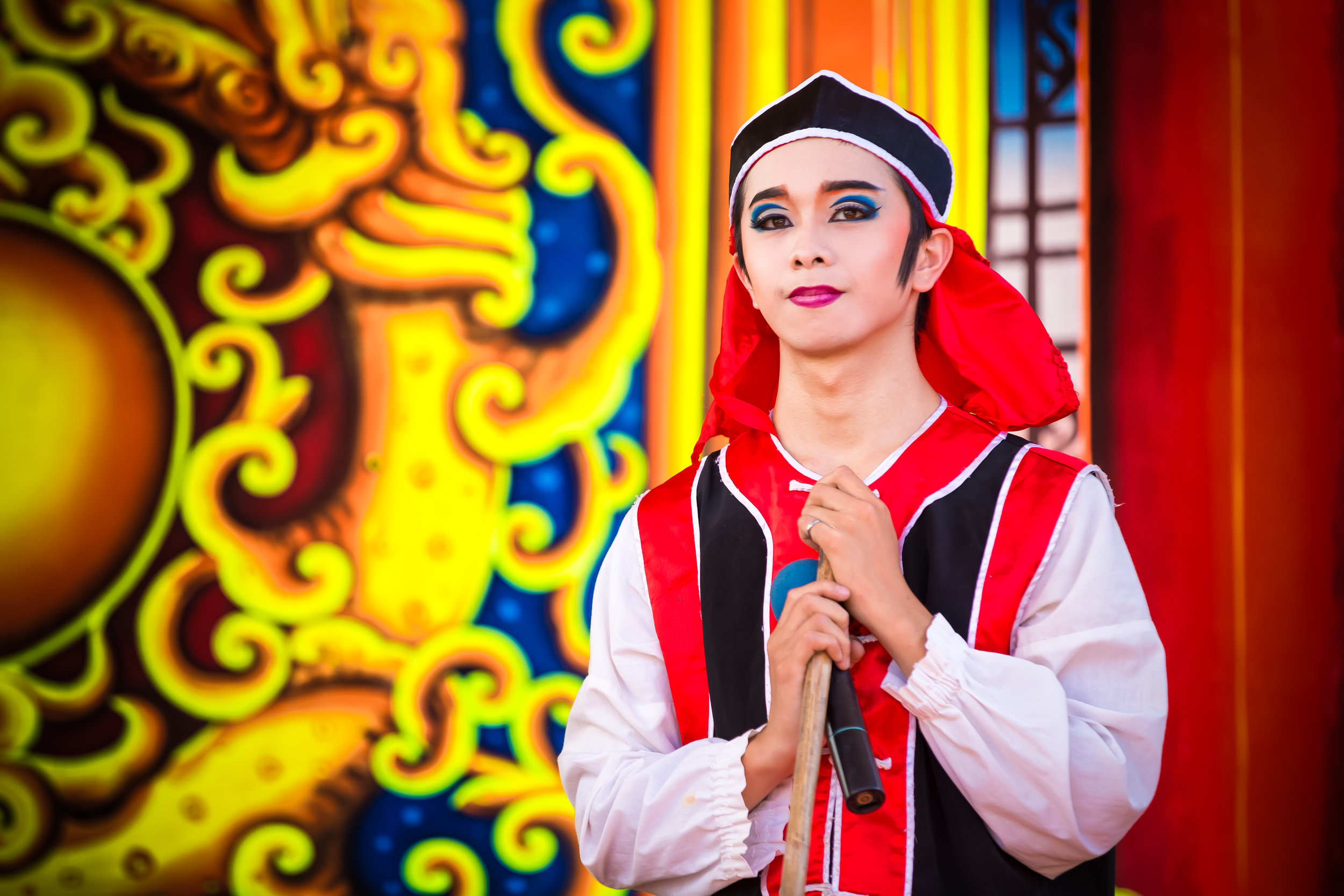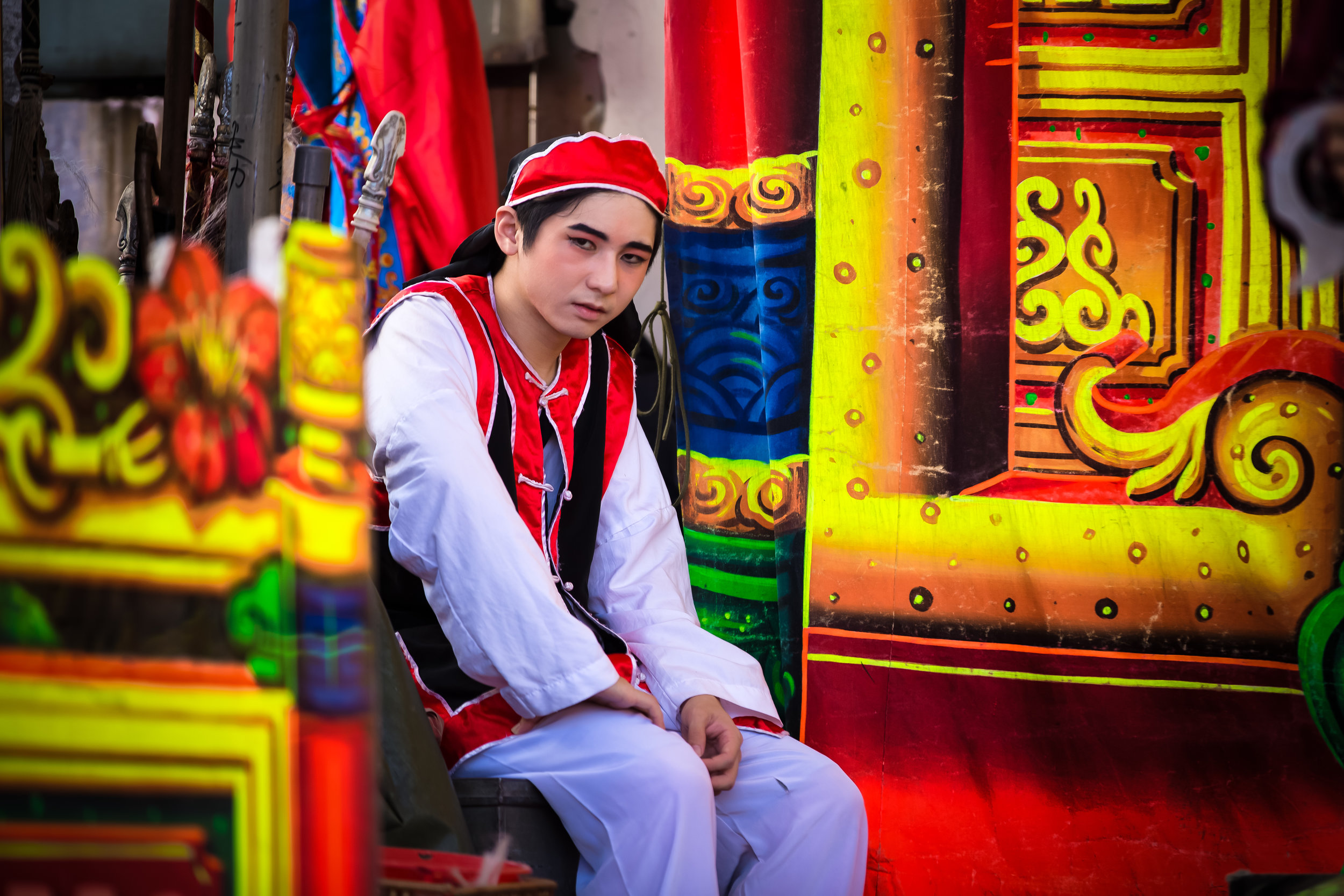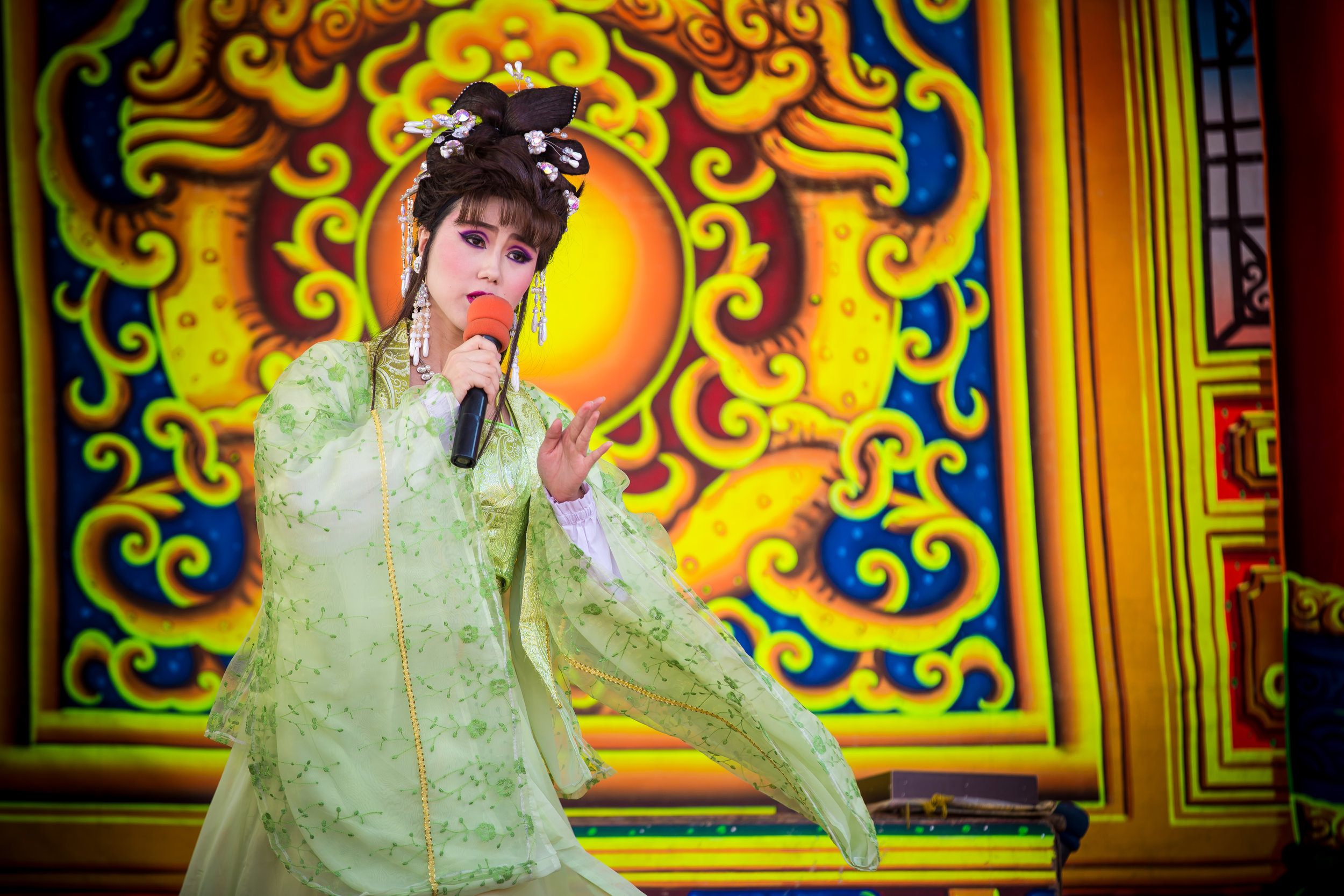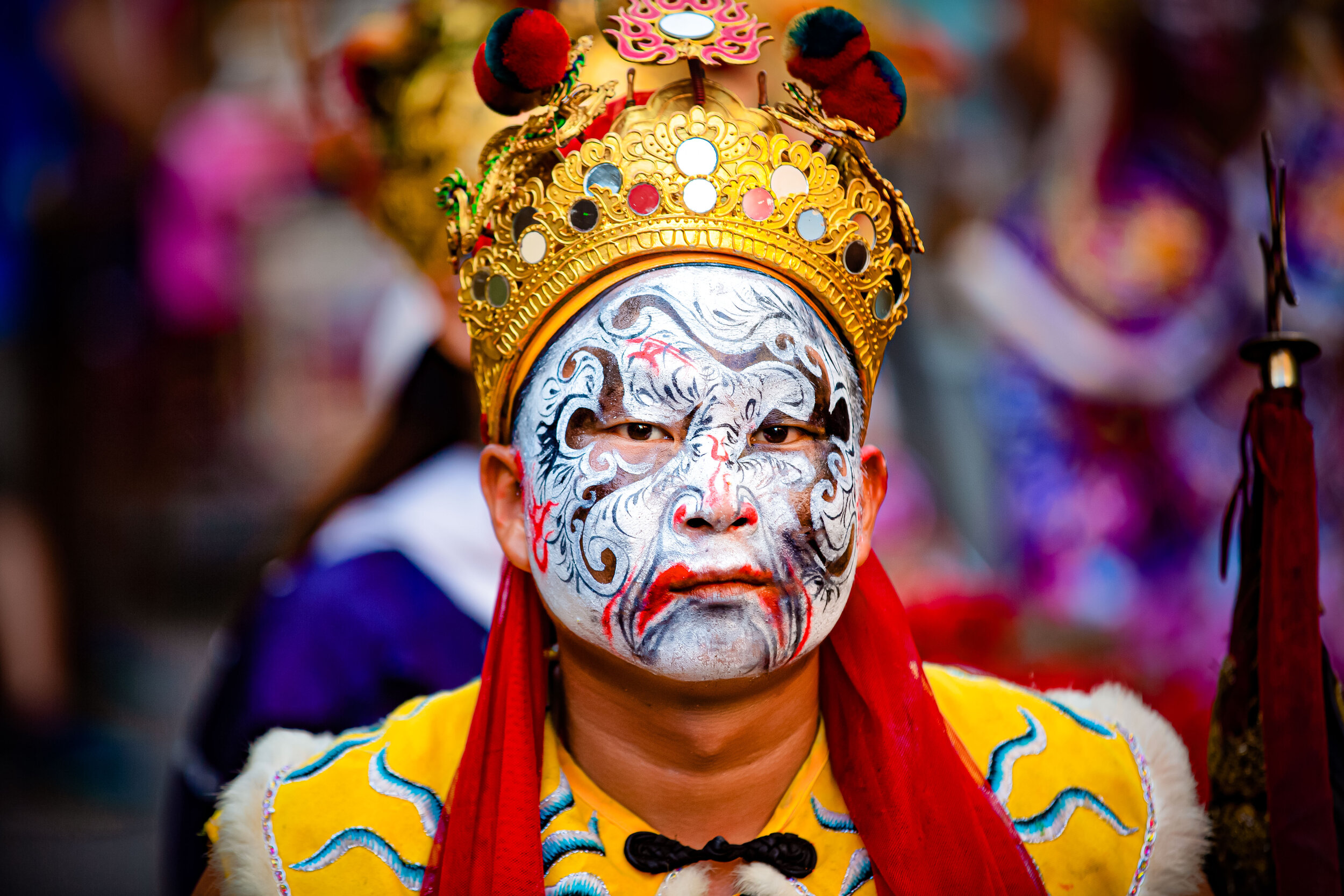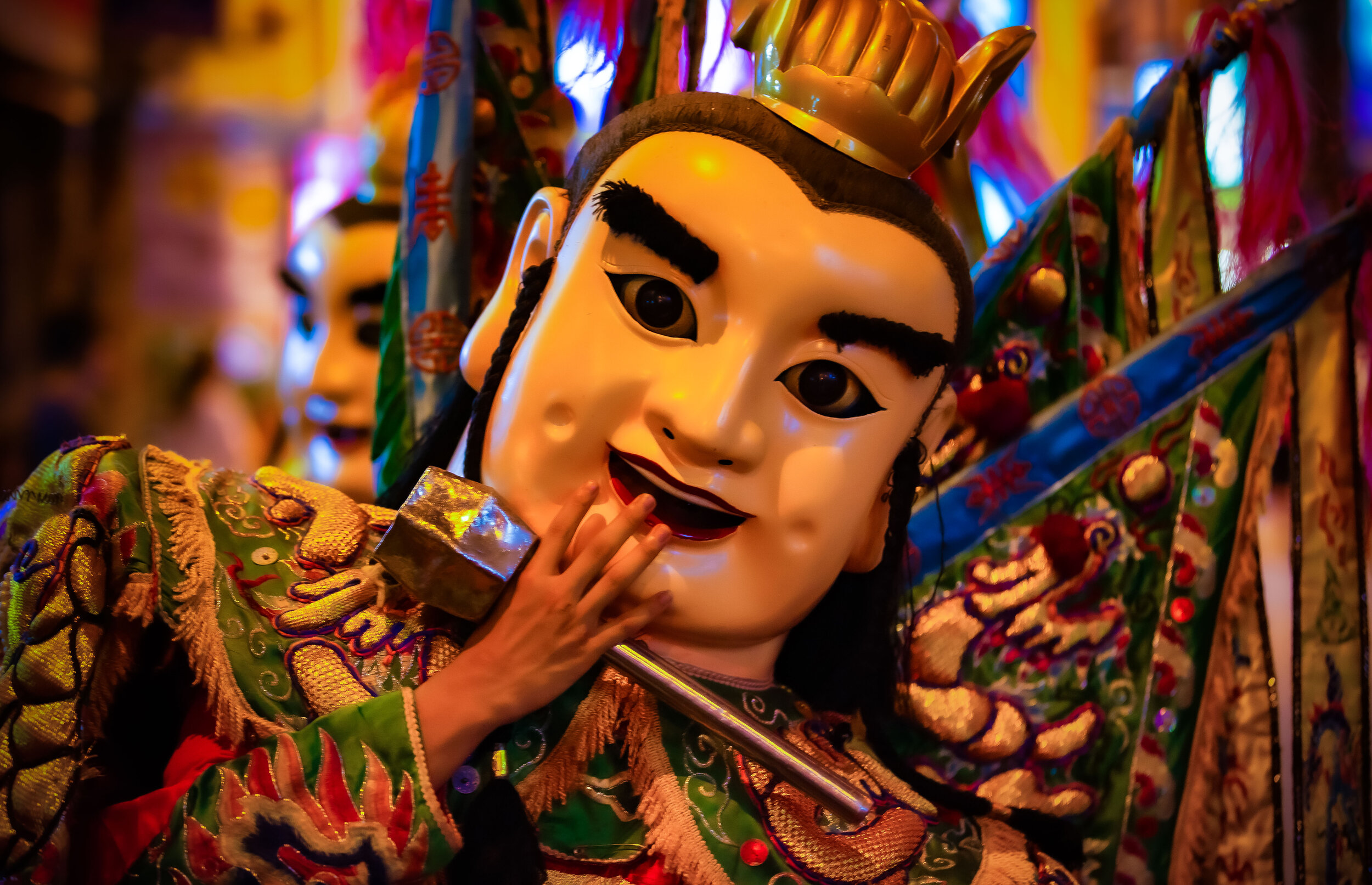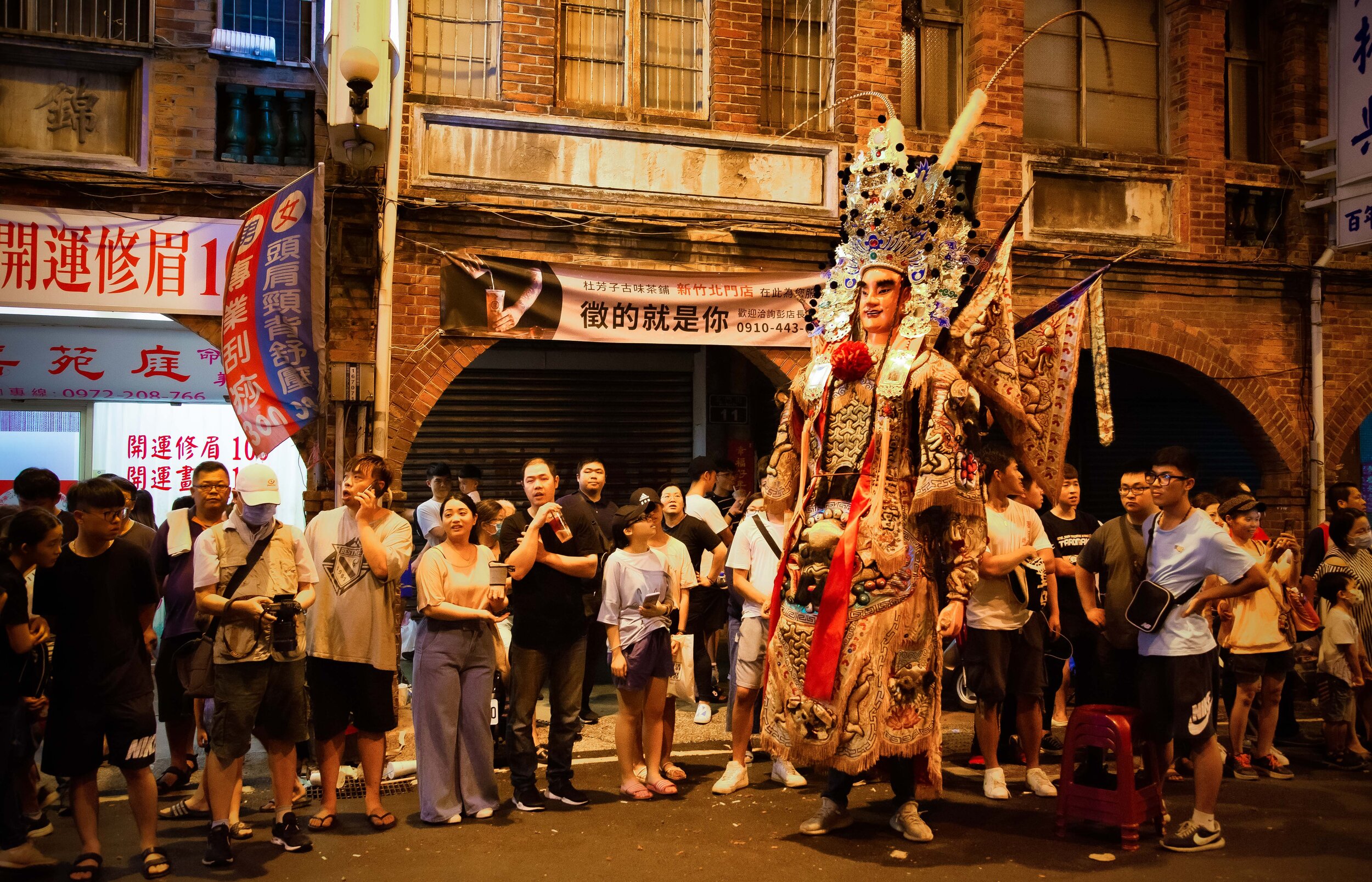I went on an urban exploration day trip with my friend and fellow photographer/blogger Alexander Synaptic last week. The resulting trip will likely end up producing more than a few blogs and quite a few photos between us as we visited several locations and enjoyed a beautiful day in Hsinchu.
Near the end of the day we decided to stop in the small village of Hsinpu (新埔), known mostly for Yimin Temple (義民廟) and its Hakka culture and cuisine. I stopped at Yimin Temple to ask some questions for my Pigs of God blog and also showed Alexander around a bit as it was his first visit to the temple which is extremely important to the Hakka people of Taiwan.
After visiting the temple we decided to drive into the downtown area of the village on our way back to Taoyuan and do a bit of a photo walk to see what cool things could find as well as going for some of the food that Hsinpu is so famous for.
Alexander had wanted to visit Hsinpu for a while because he had heard about an old abandoned theatre called the "Hsinpu Theatre" (新埔戲院) but we were saddened to find out when we arrived that it had been recently demolished and replaced by an ugly high-rise apartment building.
The street that we were on however was once referred to as "entertainment street" which meant that there was probably some kind of 'entertainment' elsewhere on the street at some point.
A quick walk down the street brought us to a suspicious-looking building that ended up also being an abandoned theatre. Despite not finding our original target we found something that neither of us had known about and ended up being pretty much the kind of thing we were looking for.
While there isn't much information available online about this abandoned building, we found out that it was named Hsinhsing Theatre (新興戲院). Thanks to the assistance of public records, we also found out that the theatre, which is more or less empty today, was originally registered as a business in 1956 and ultimately went out of business sixty-one years later at the turn of the century.
When the theatre went out of business, the building was then used as a make-shift karaoke bar for a period of time but that seems to have been a short-lived business venture and today the beautiful old theatre sits abandoned and is used by neighbours as a place to keep their dogs tied up and to store a bunch of garbage.
If you want to know more about the theatre you're going to have to visit Alexander's well-written and well-researched blog post about it - He's a master of urban exploration and this kind of thing is really his domain. I'm just here to share my photos from the theatre here. Enjoy!
Xinxing Theater 新興戲院
While the theatre wasn't a secret, it wasn't really on the radar of Urban Explorers before Alexander and I posted blogs and photos about it online. Since then the theatre has been visited quite a few times by other urban explorers which gives me a bit of a reason to update this post with not only newer photos, but some additional information and a bit of a rant.
When Alexander and I first visited the theatre, the biggest problem was the dogs which were tied up on the first floor - and who didn't really appreciate us invading their space. On my second visit to the theatre however the dogs weren't around, but there was something else that bothered me.
One of the mottos that Urban Explorers live by is this - "Take nothing by pictures, leave nothing but footprints". This simple phrase describes the goal of urban exploration, which brings explorers to abandoned buildings, factories, hospitals, schools, etc. so that they can "explore, discover and photograph buildings and constructions created by human beings in the forgotten spaces of civilization." (link)
Alexander and I knew that there was a projection room on the second floor of this building. We wanted to get inside of it to see what secrets we could find. There was however a deadbolt on the door, so following the rules of urban exploration, we just tried to peek in through one of the windows.
After we posted the blogs and photos however, some other people, who apparently don't bother with the rules decided to cut the deadbolt and open the door to the projection room. Now that the projection room was open, I decided to go in and see and was quite surprised to find that there was still some stuff left, which included parts of the old projectors, chemicals and old film.
It was nice to be able to gain access to the room, but it also bothered me that someone would break down the door. The other thing that bothered me was that the so-called "Urban Explorers" who visited after Alexander and I also left a bunch of garbage. I noticed that there were 35mm film-containers and packages on the ground, a broken camera tripod, etc.
If the point is just to take photos and document the theatre why leave so much garbage? Why ruin this exploration for others? I realize that not everybody follows the same standards, but its the people who do these things that ruin it for others. The theatre may be easily accessible now, but sooner or later the neighbours might just get tired of people showing up and eventually just start calling the police. Thats unfortunate. If you want to visit a place like this and want to try your hand at urban exploration, try to be responsible.
Gallery /Flickr (High Res Shots)
